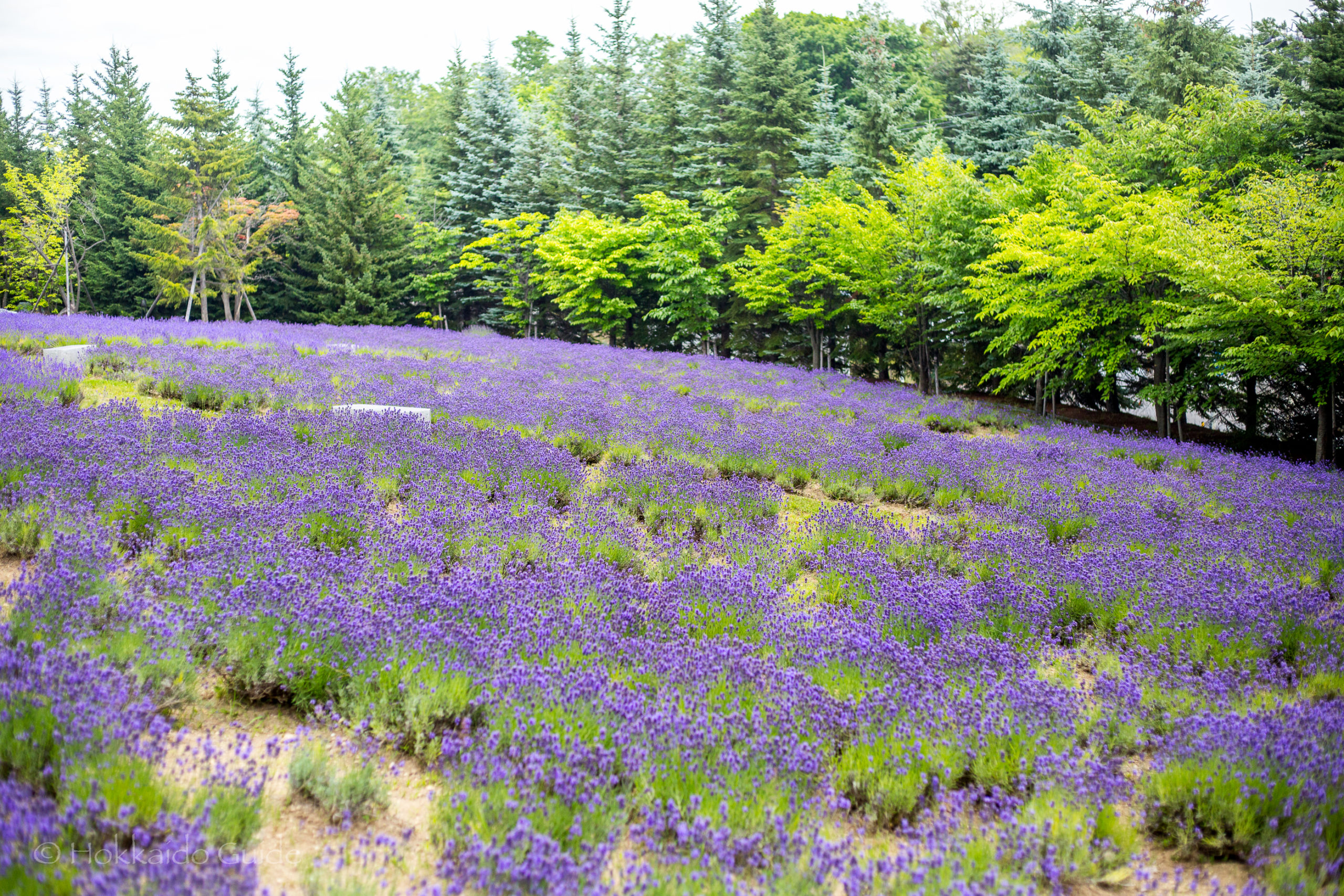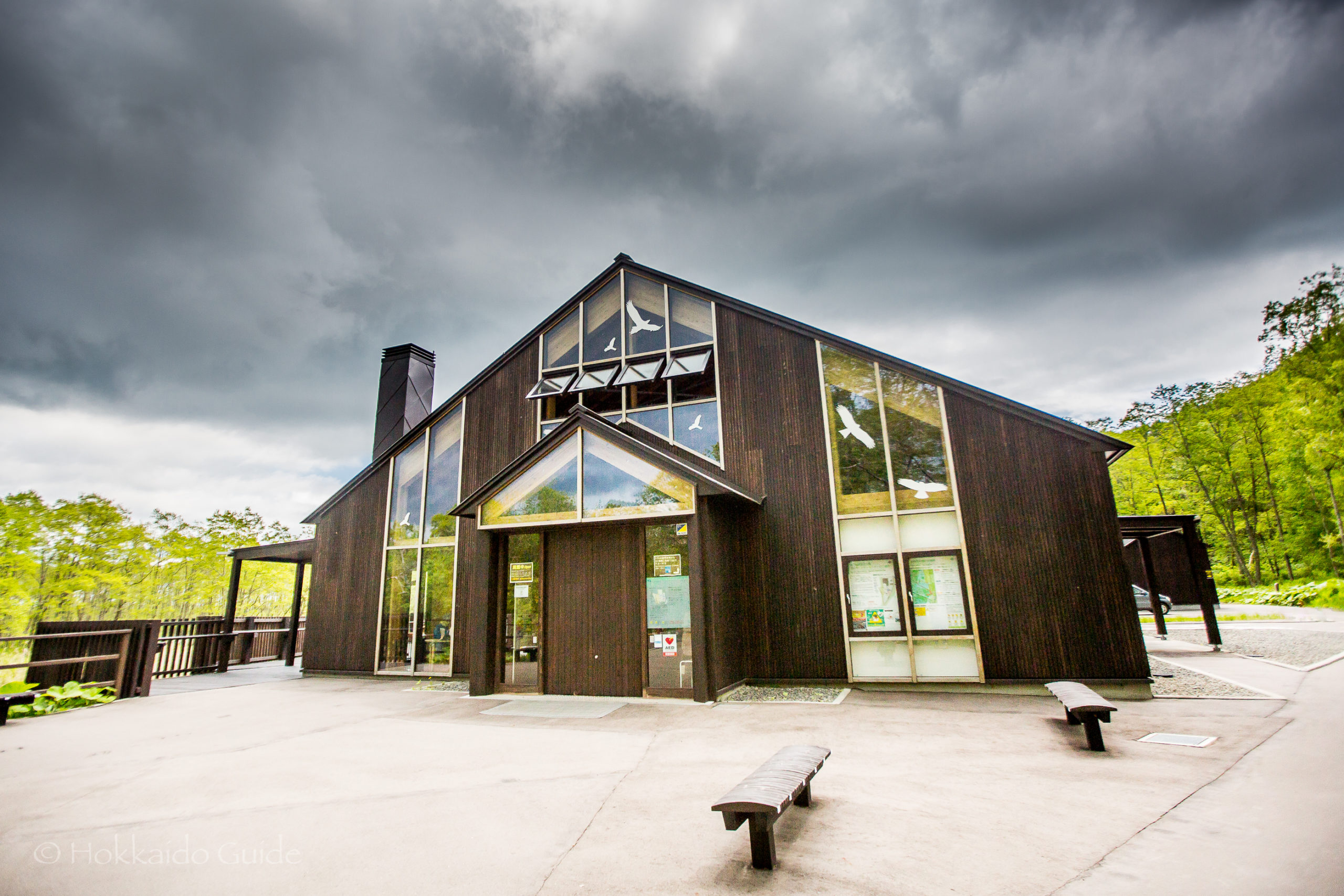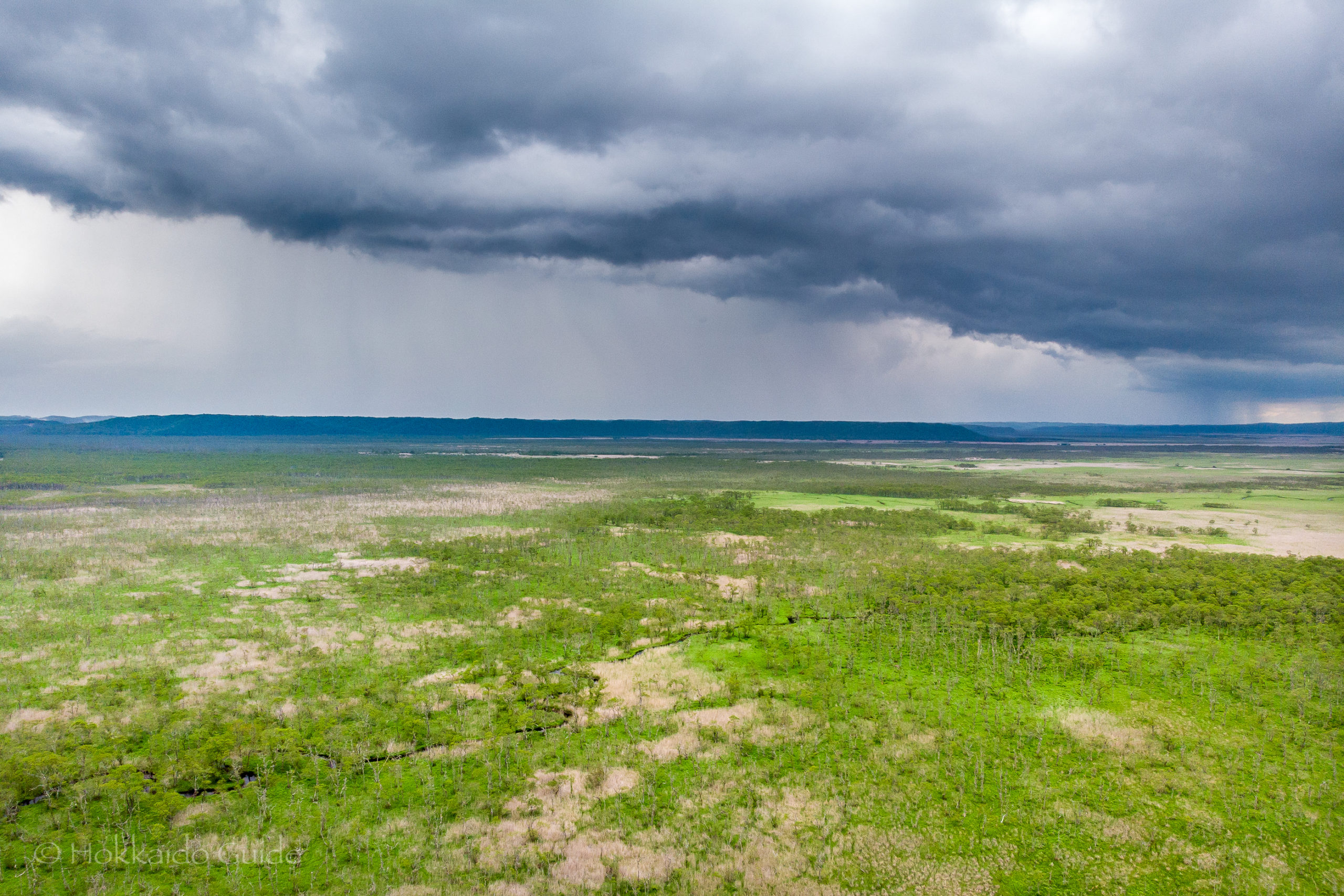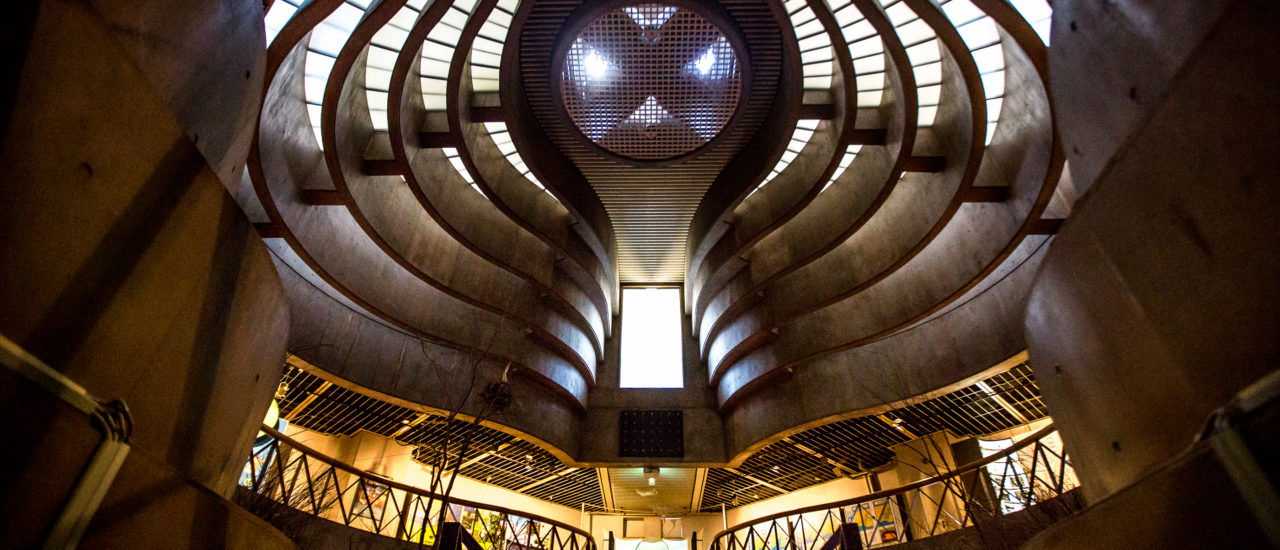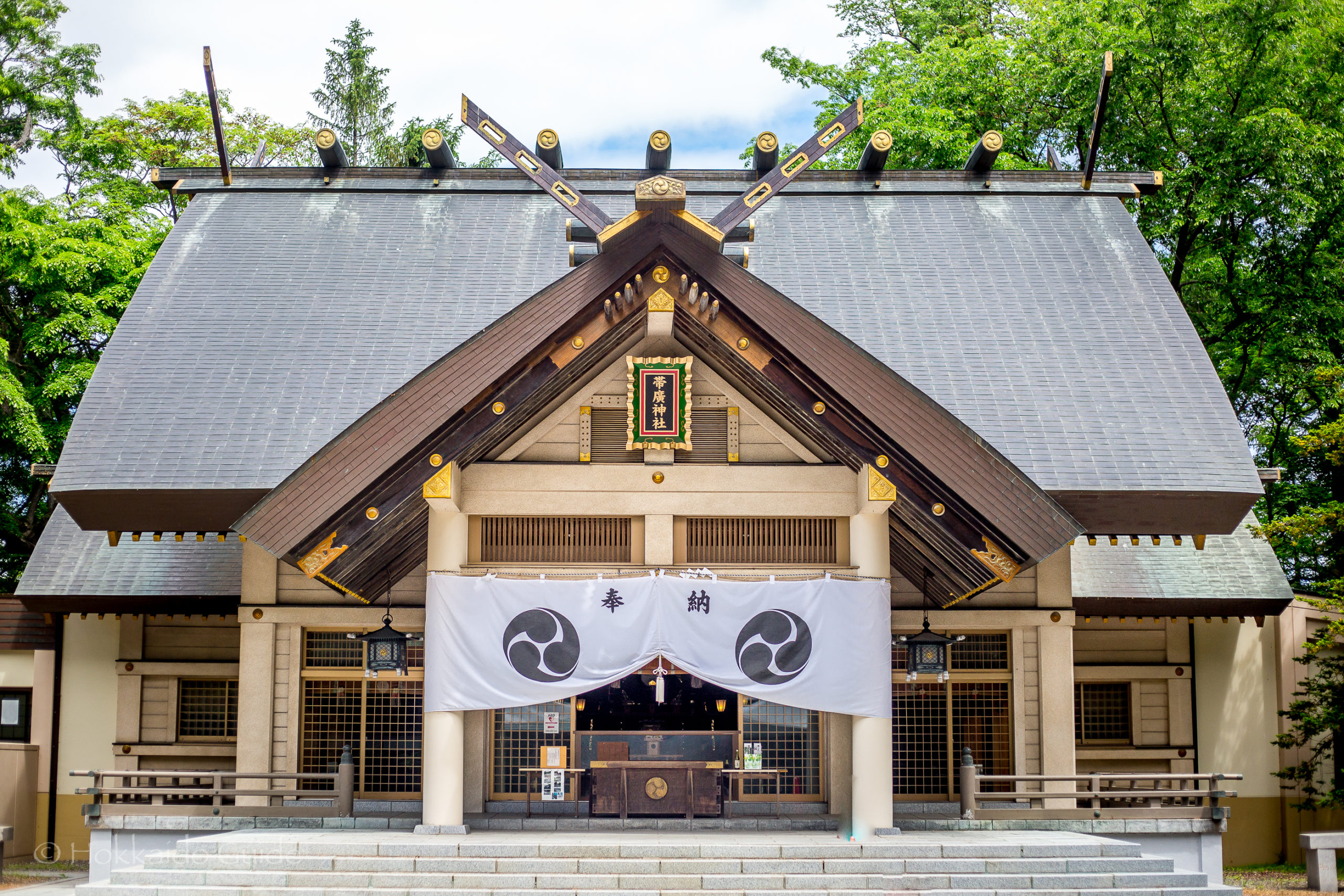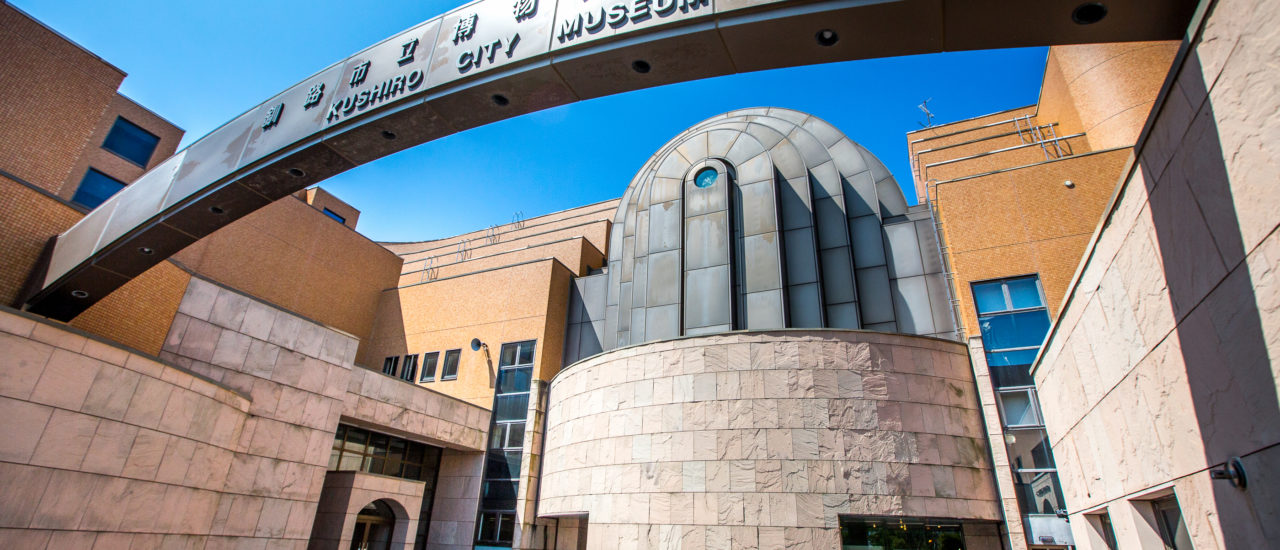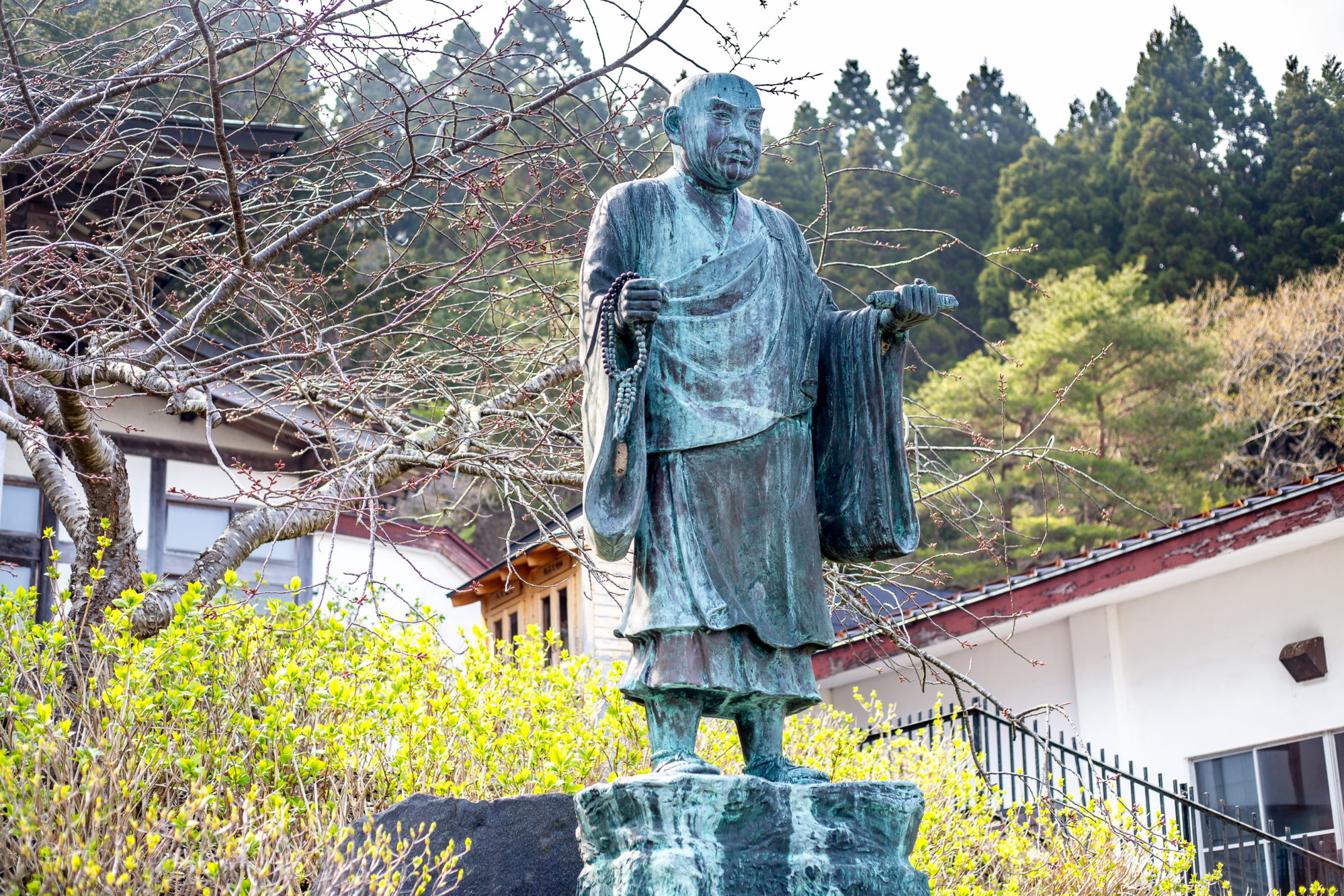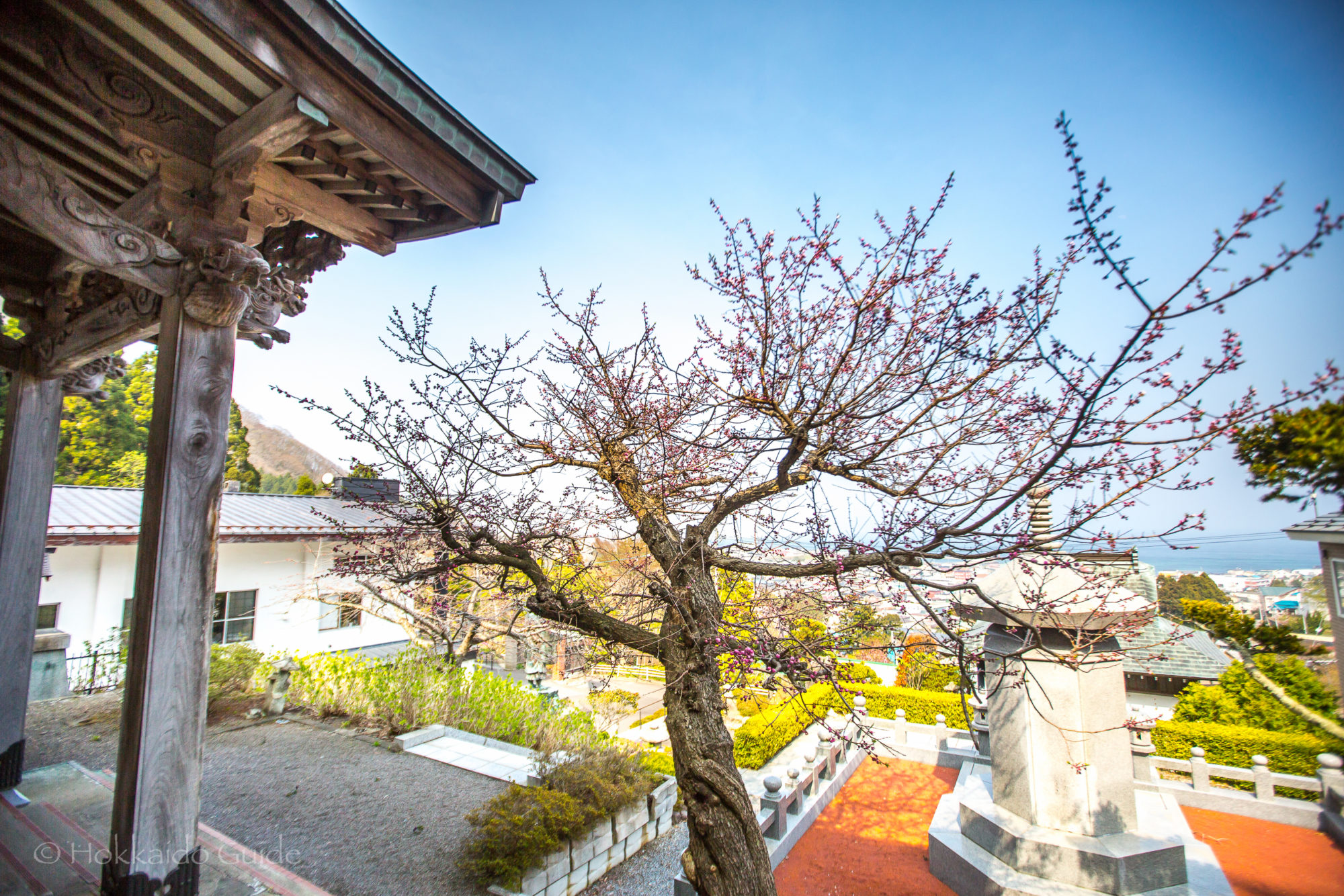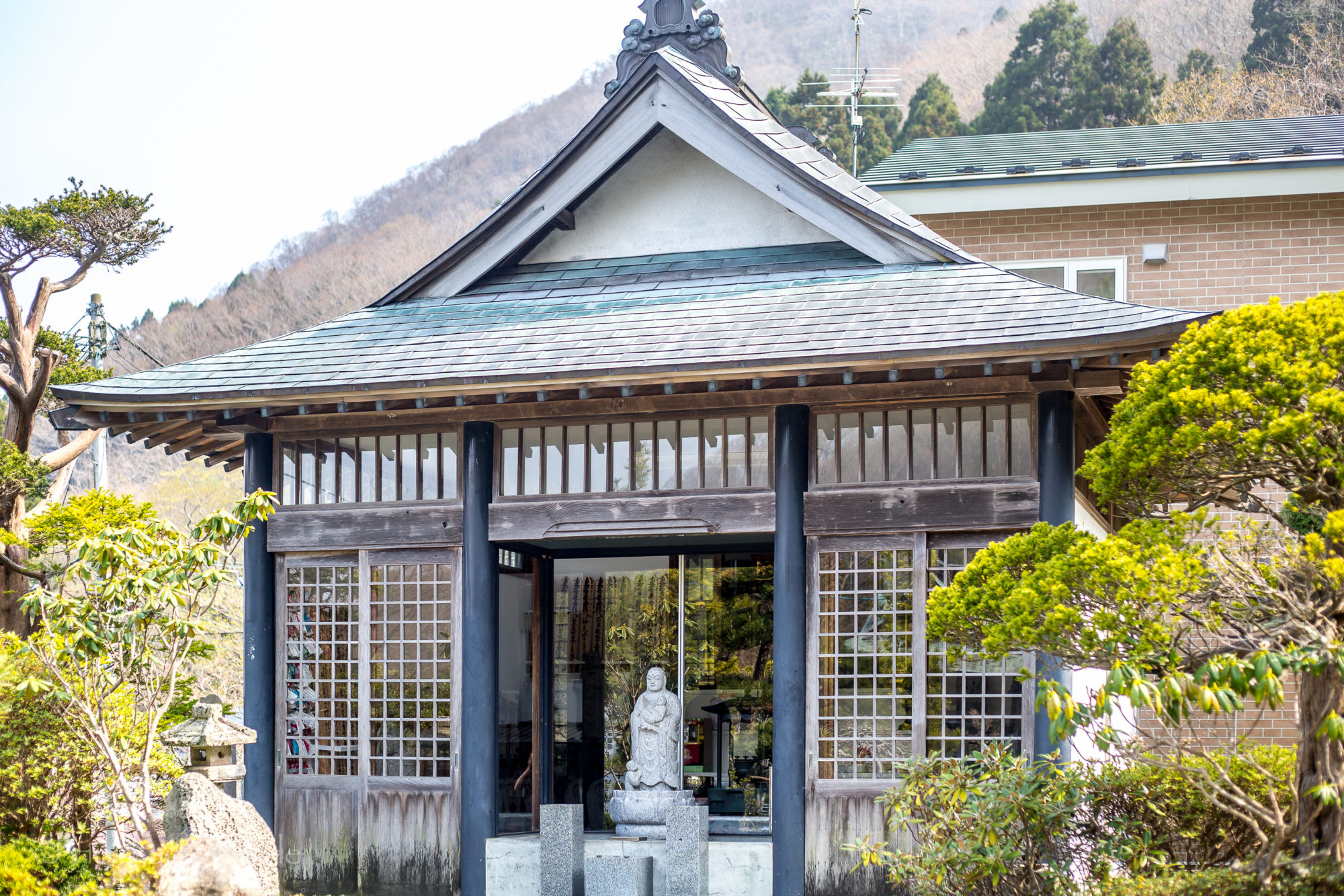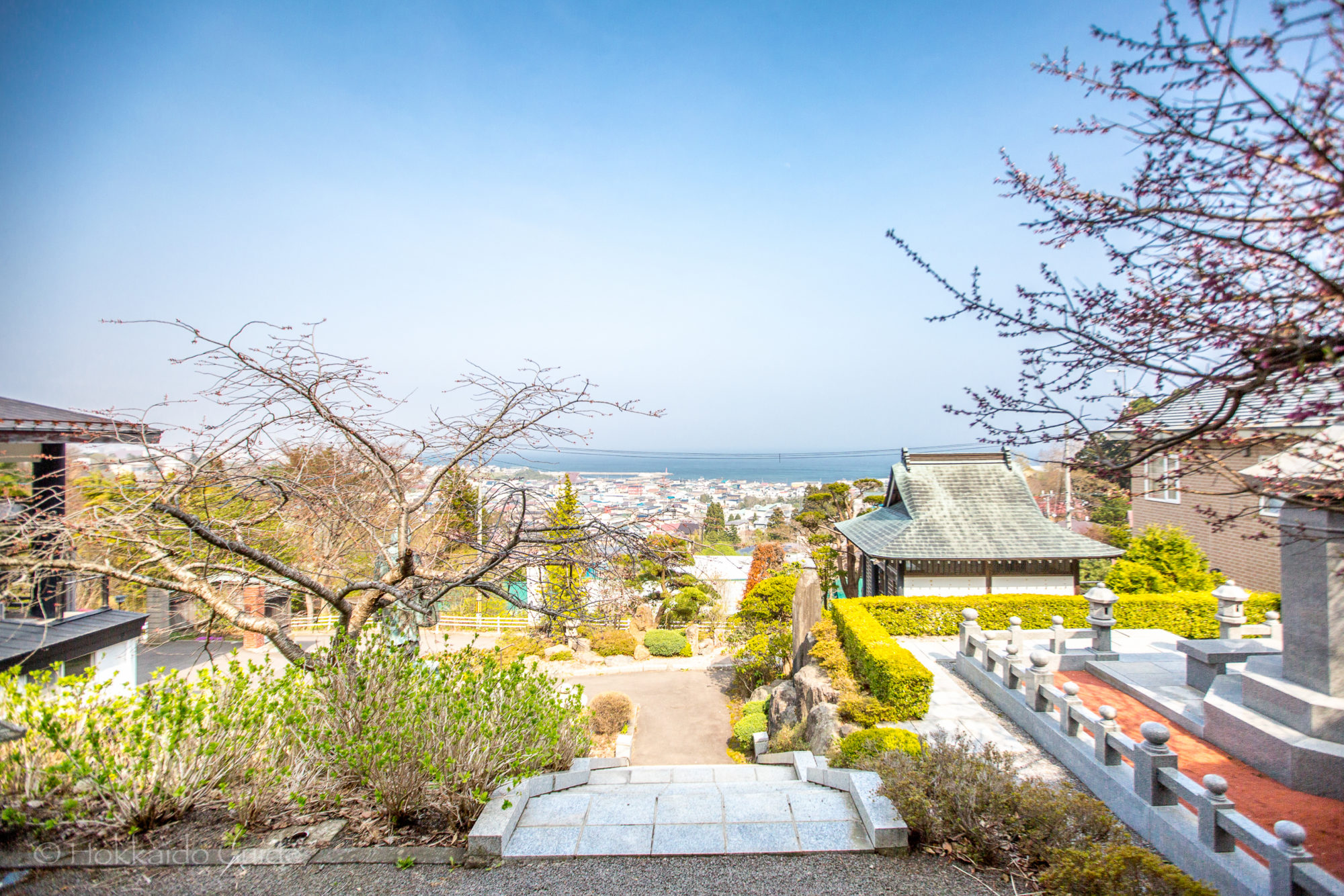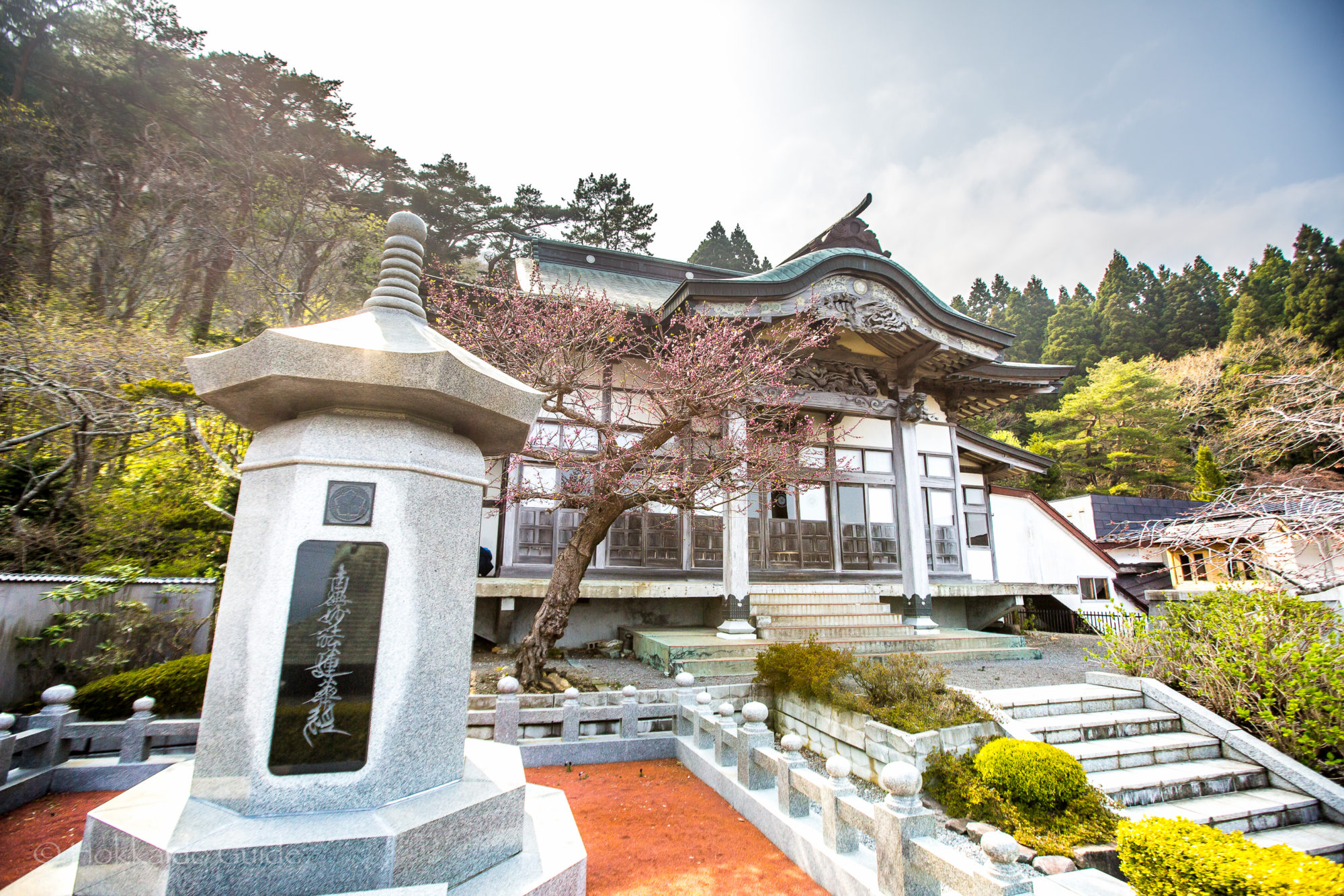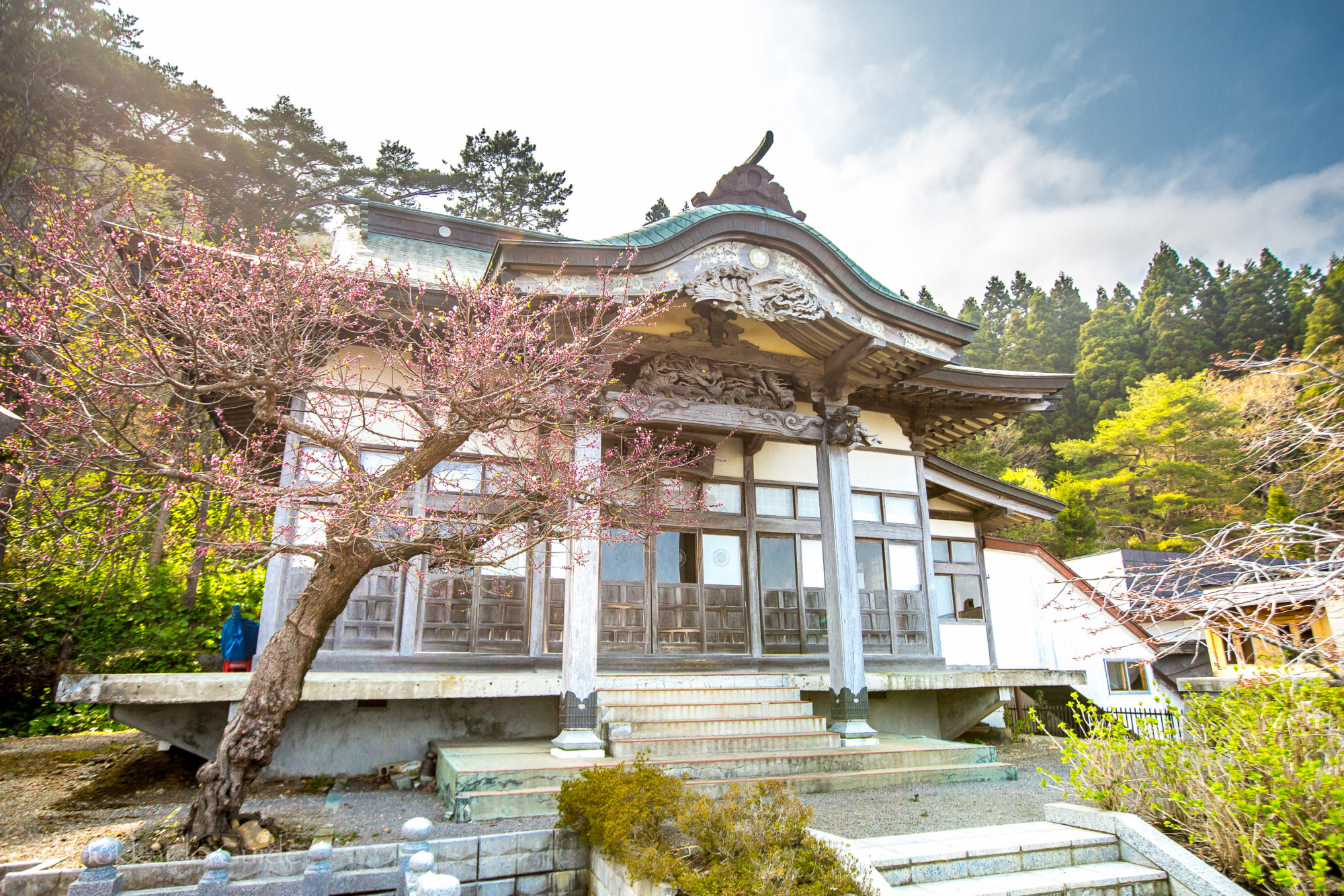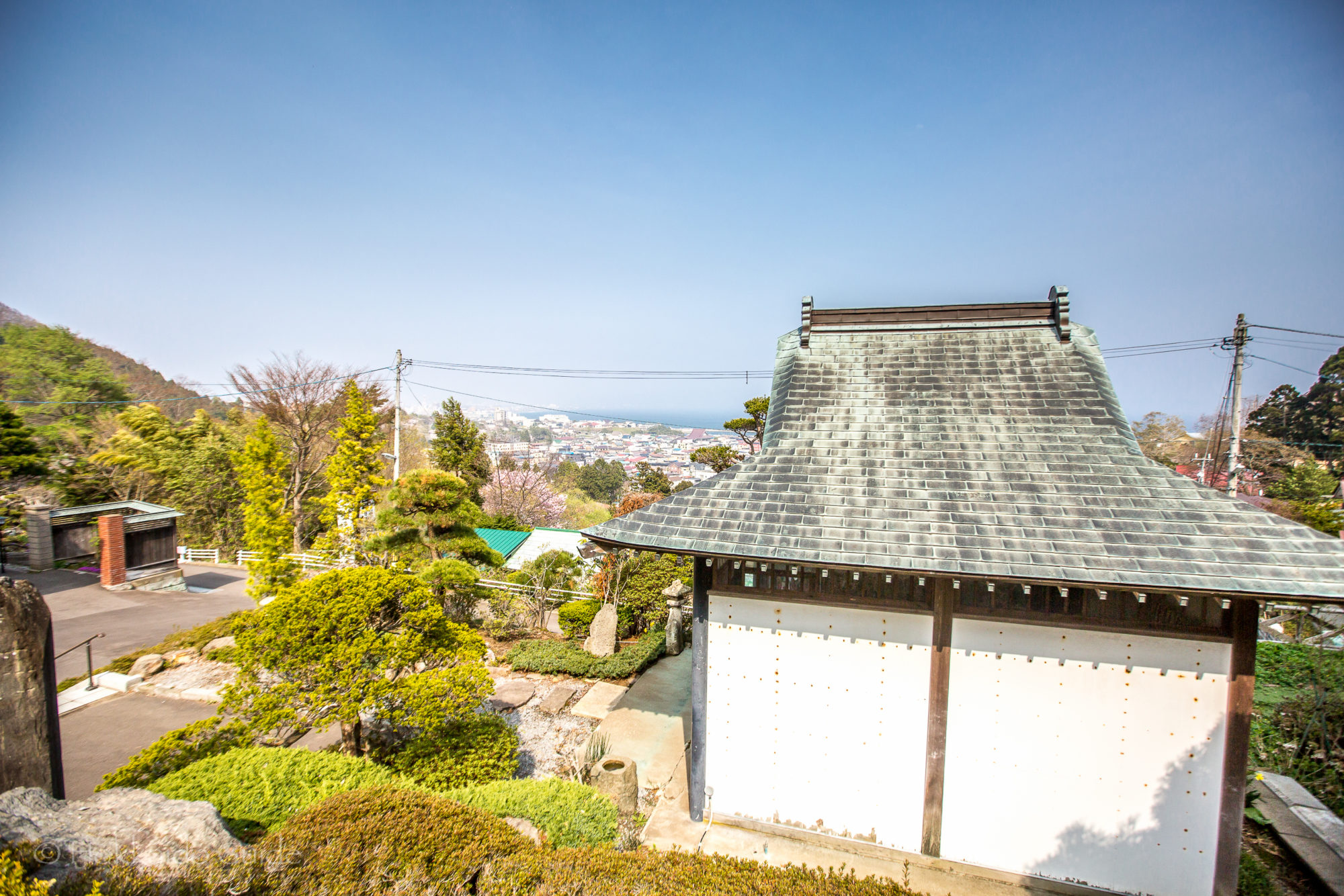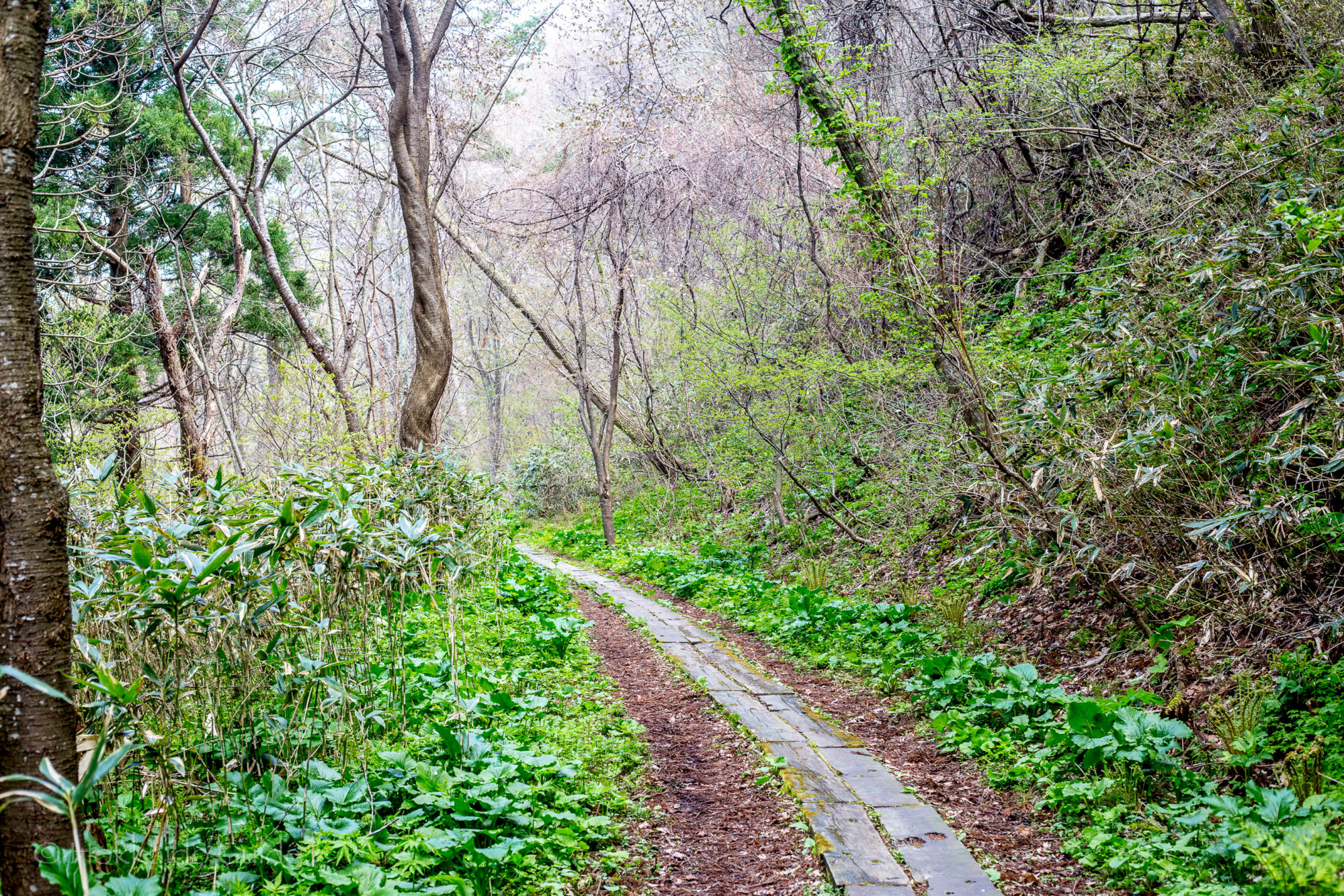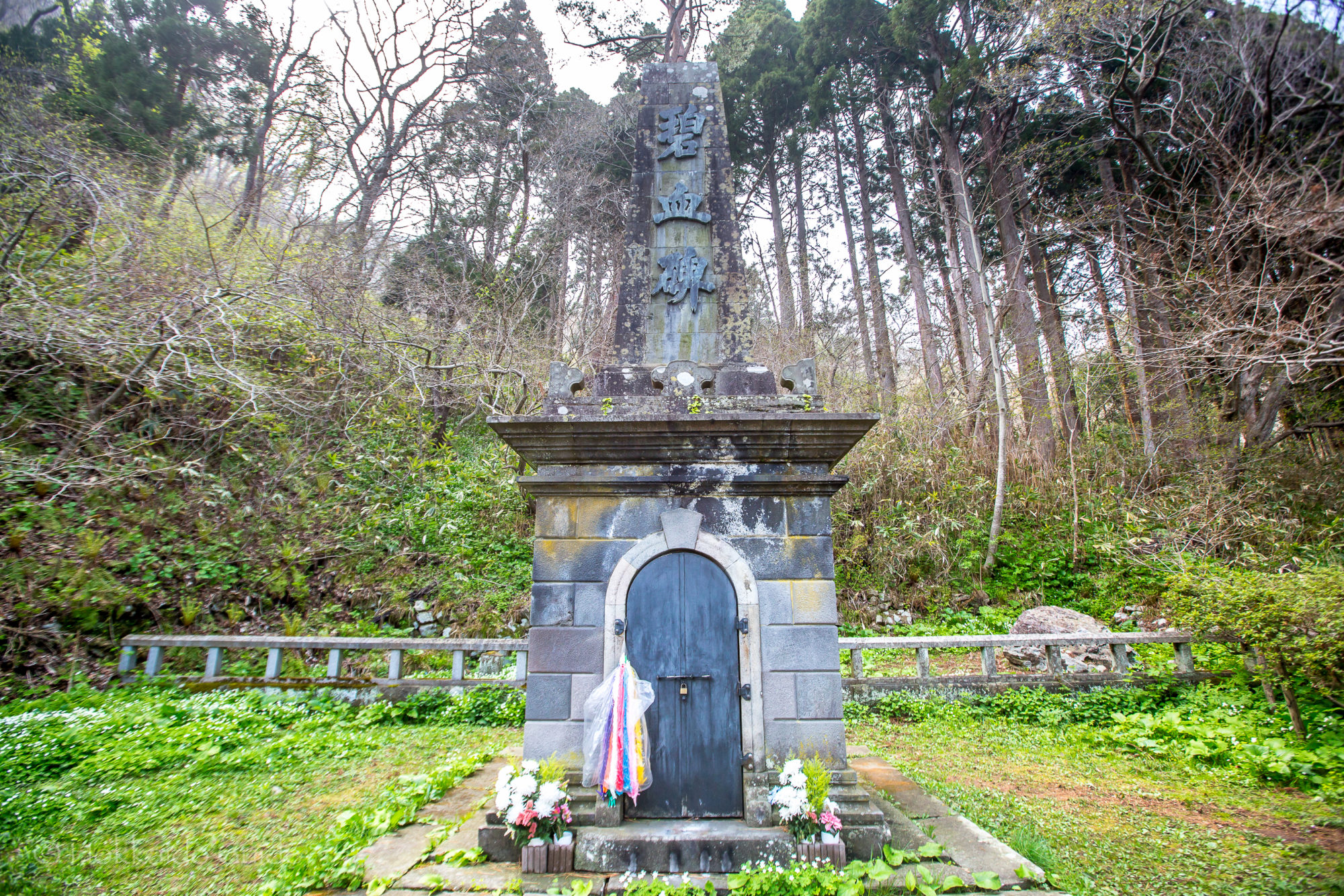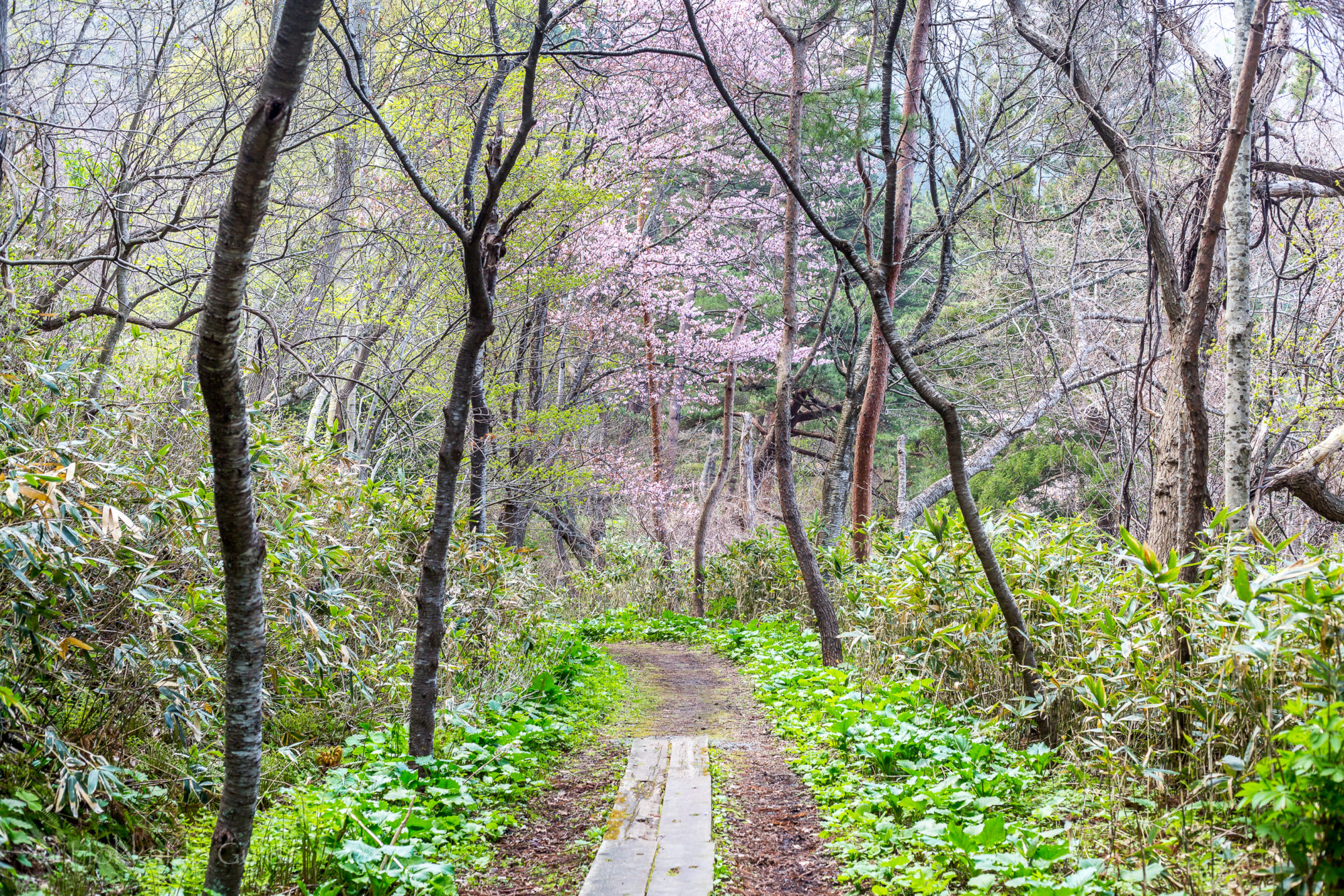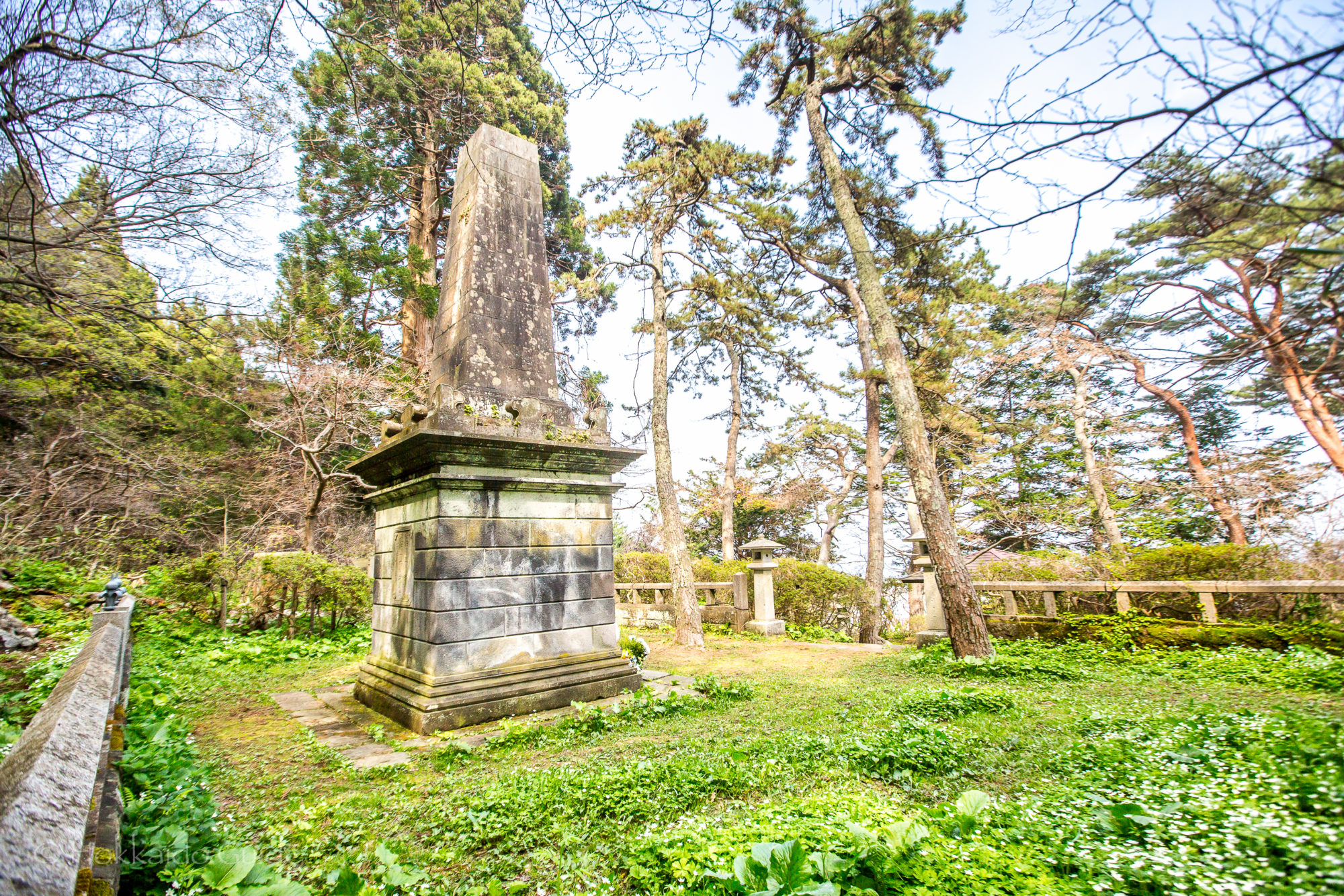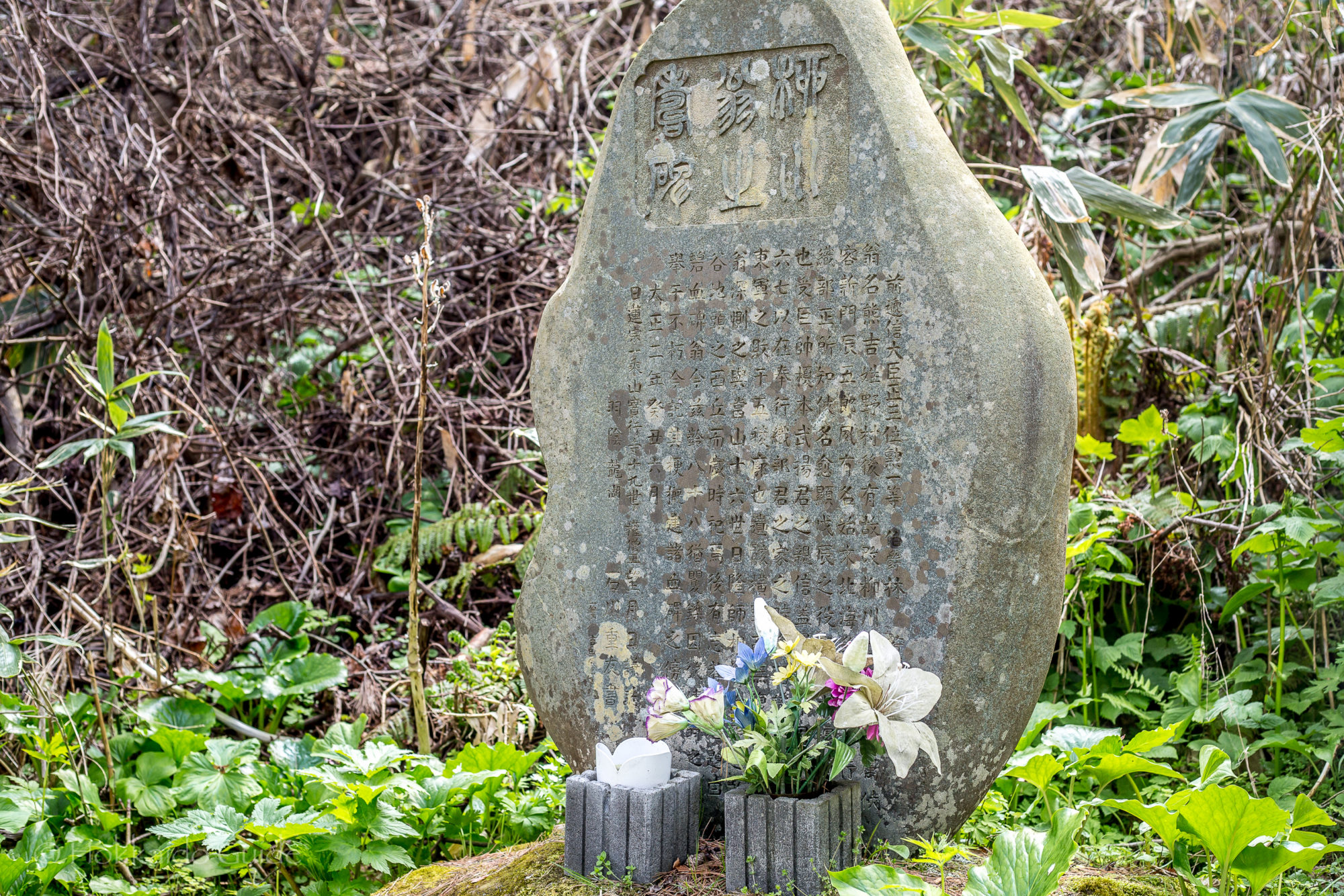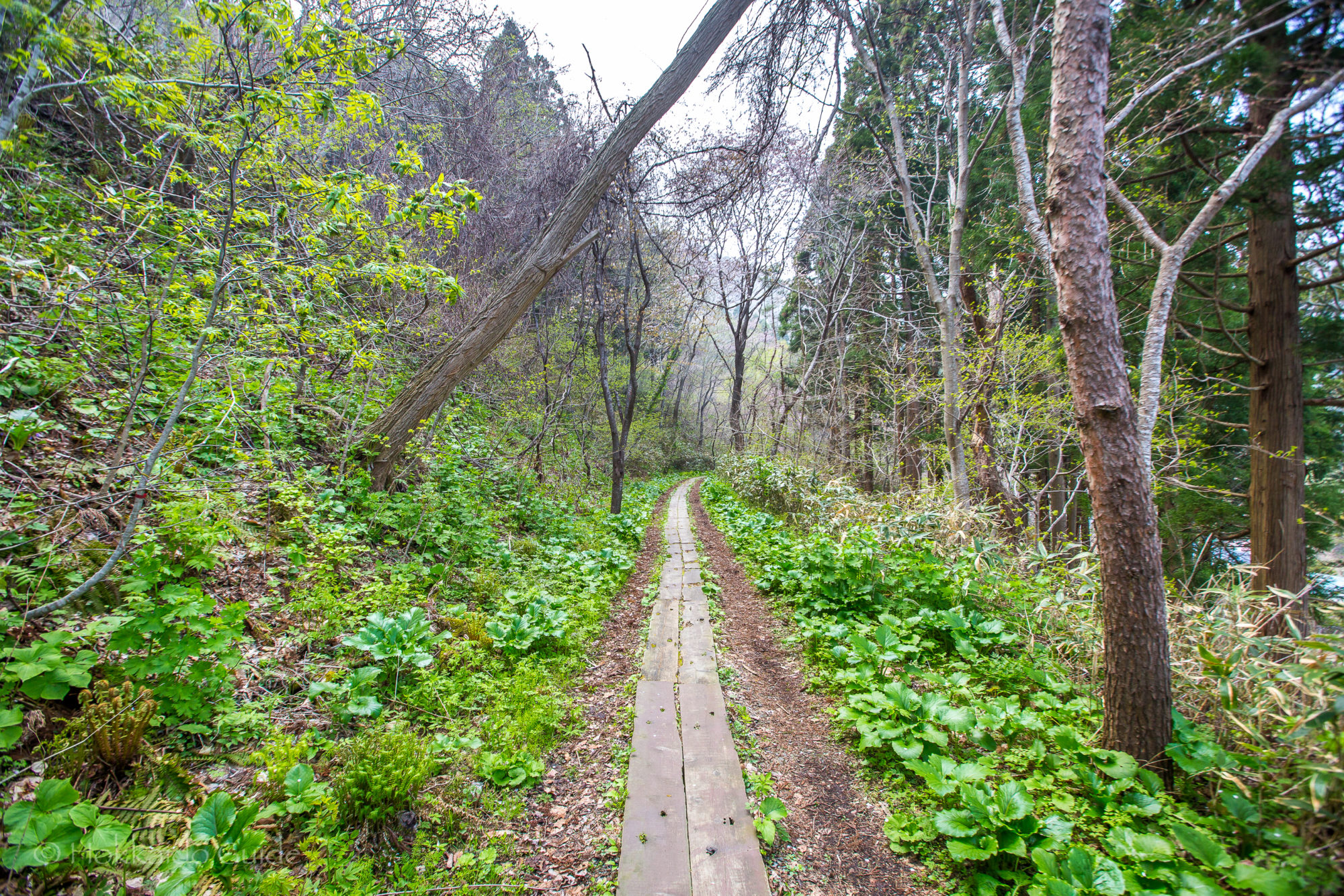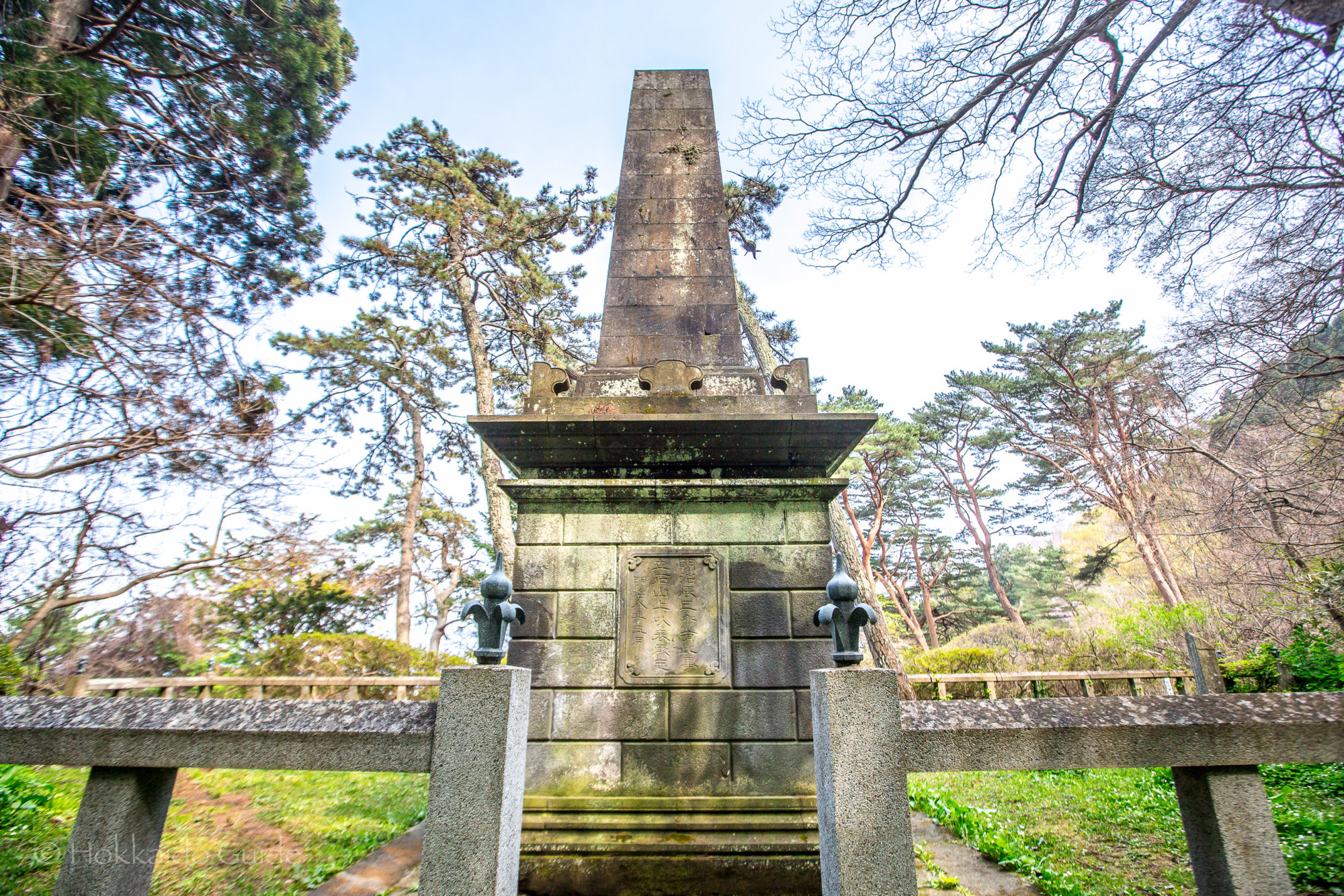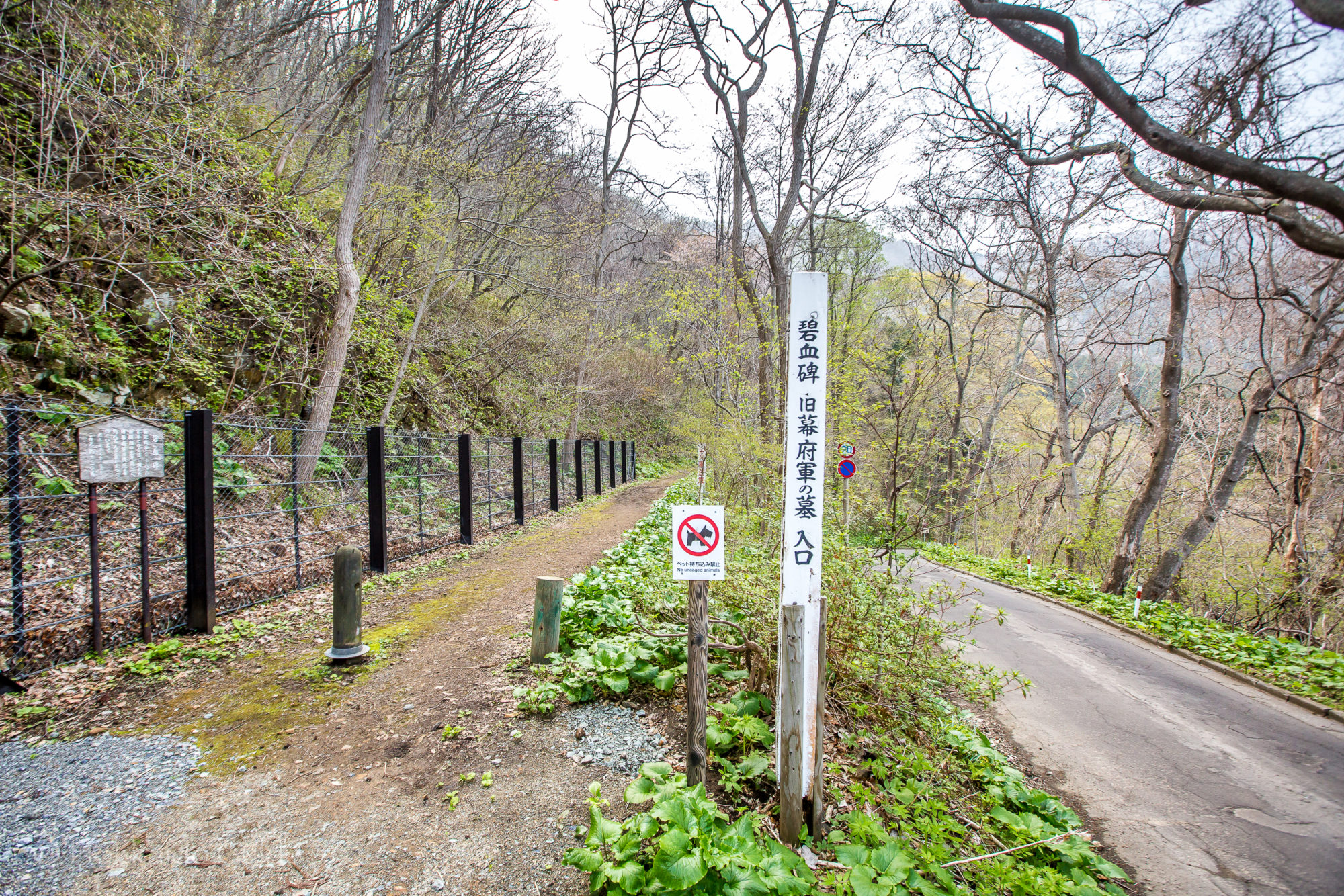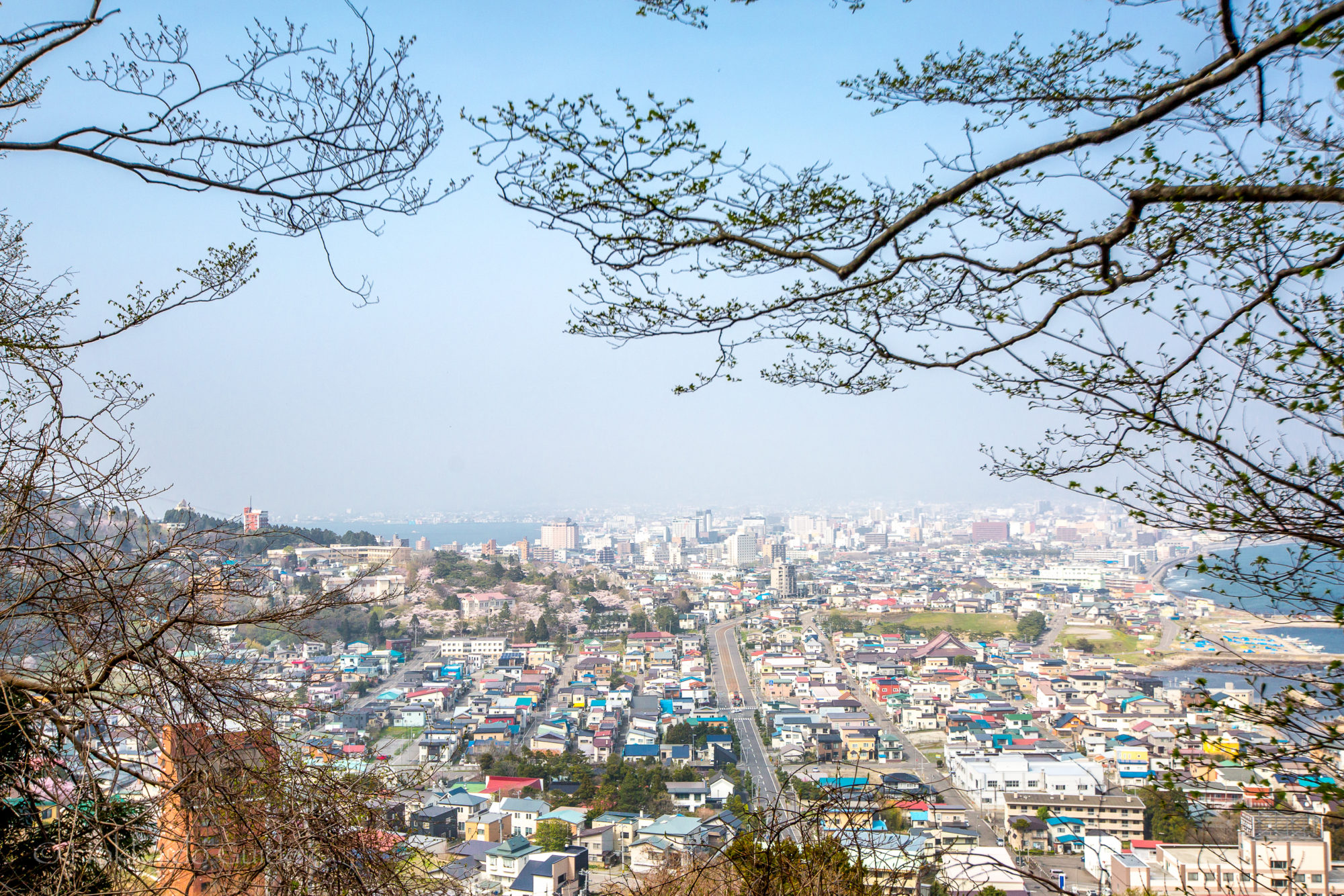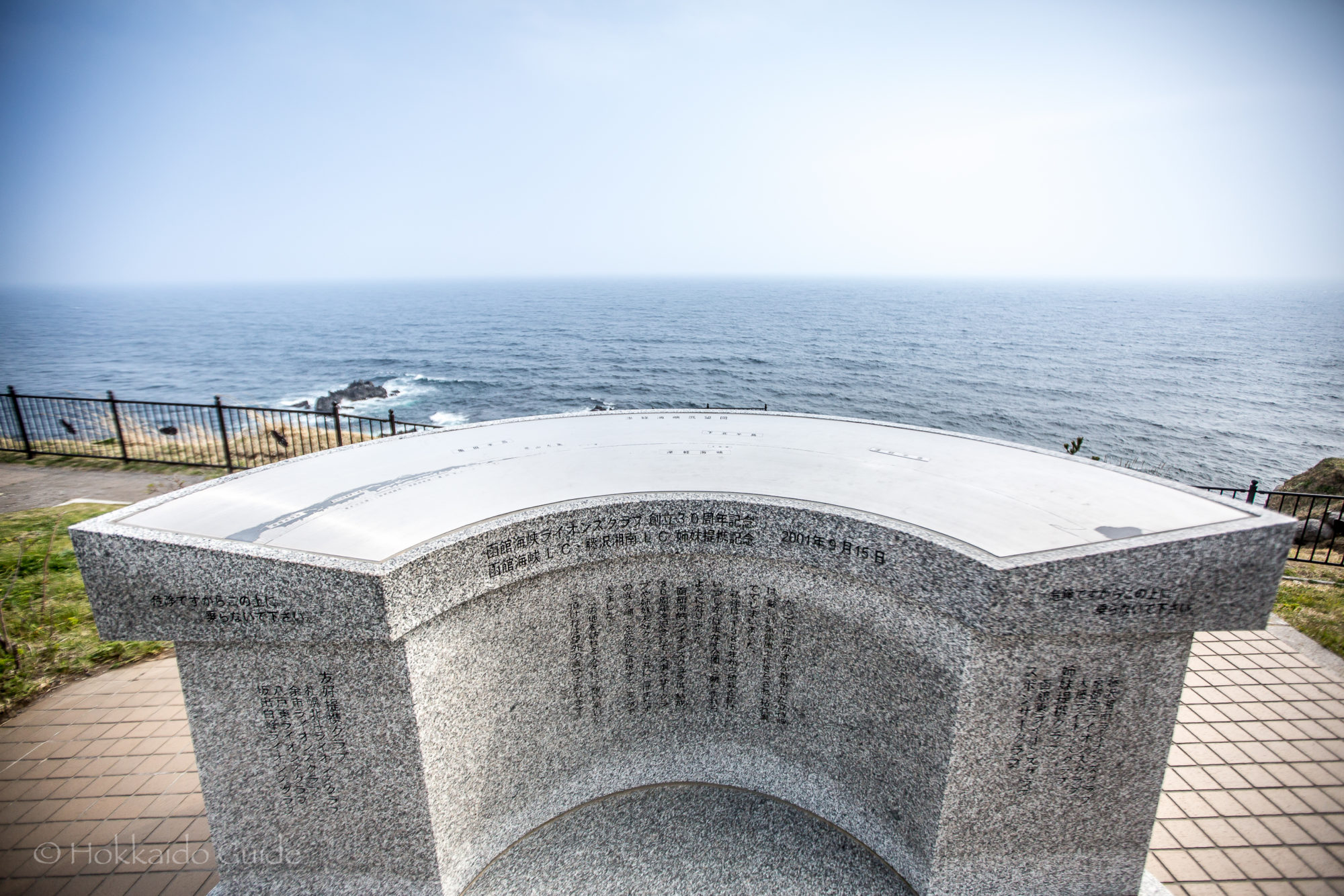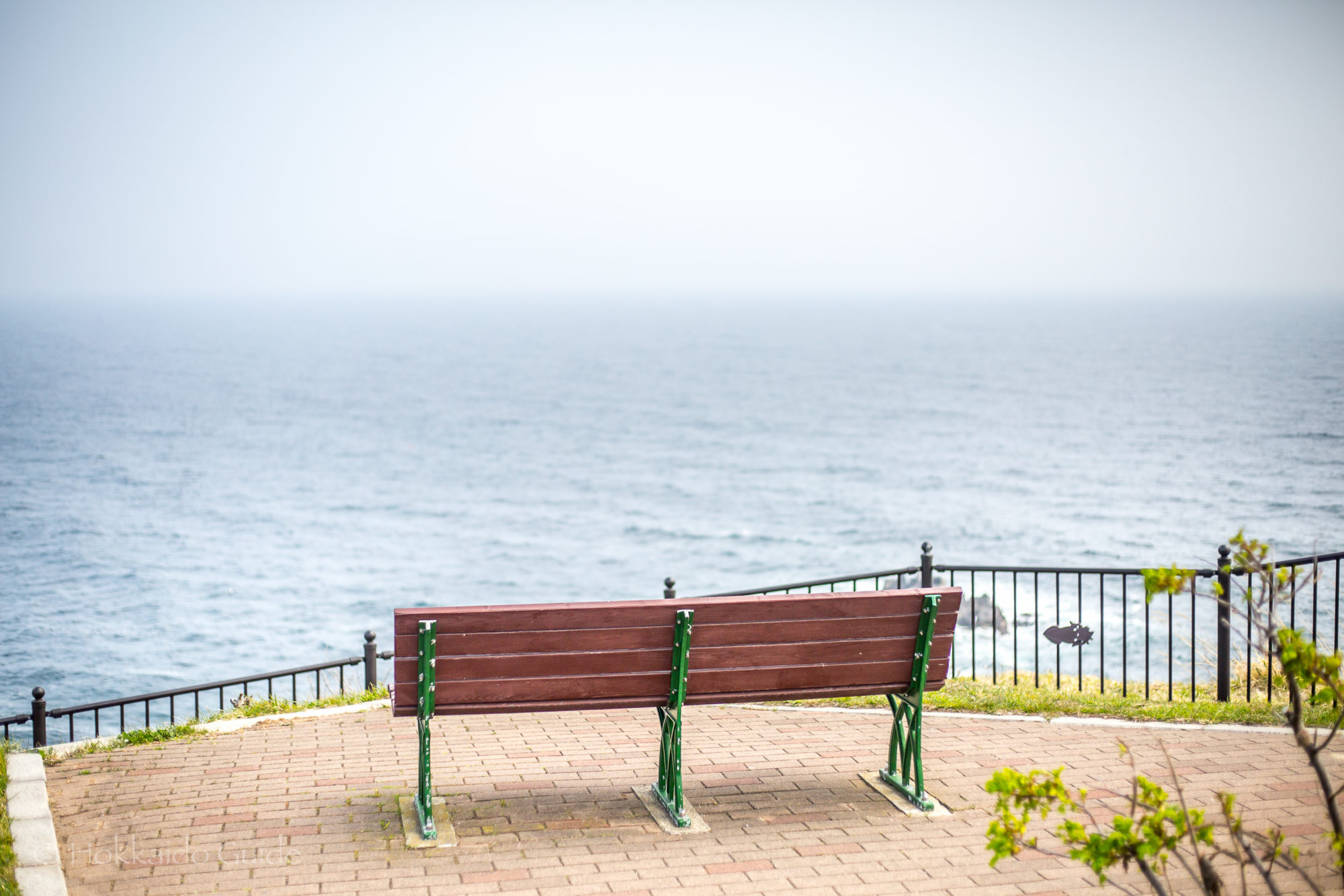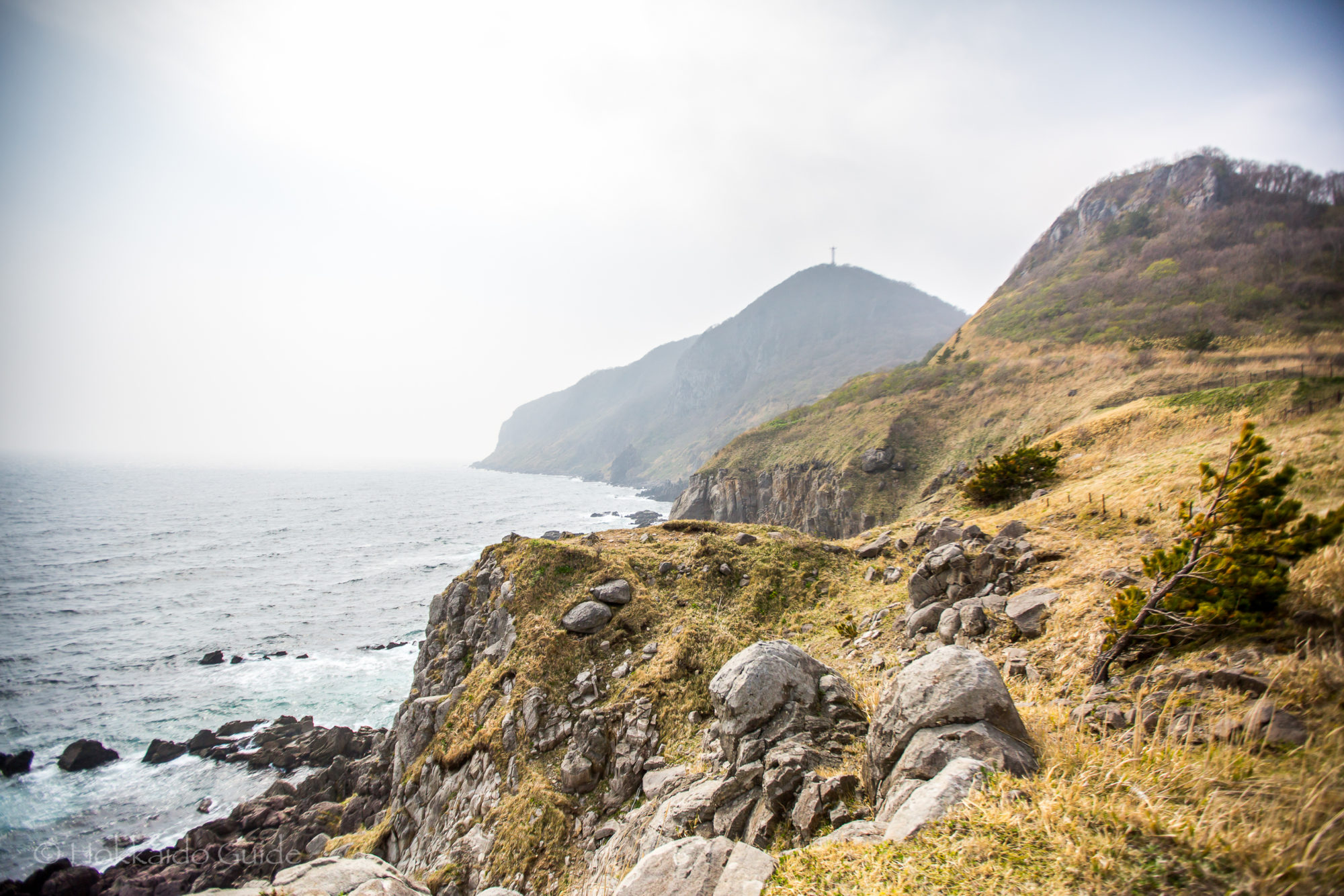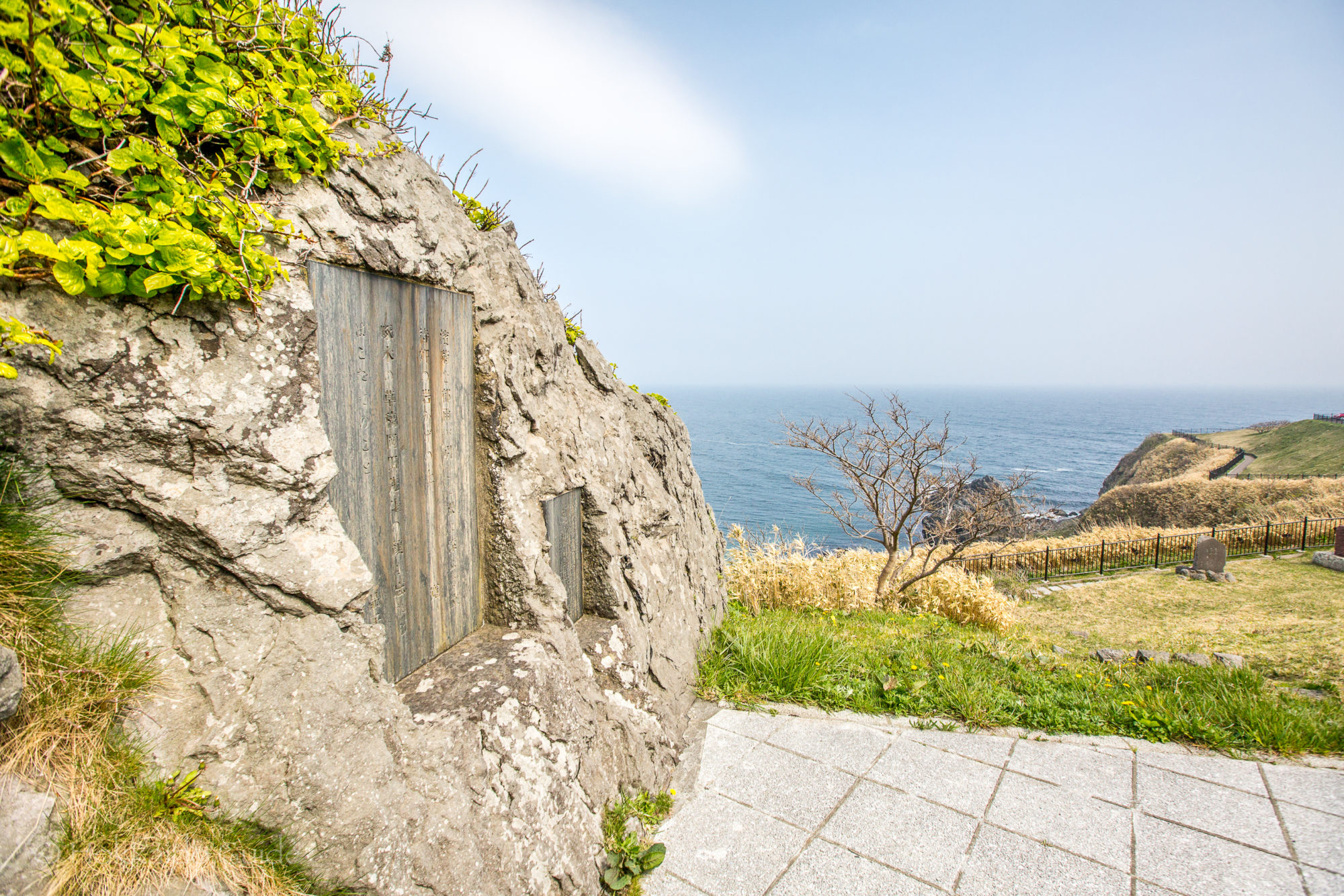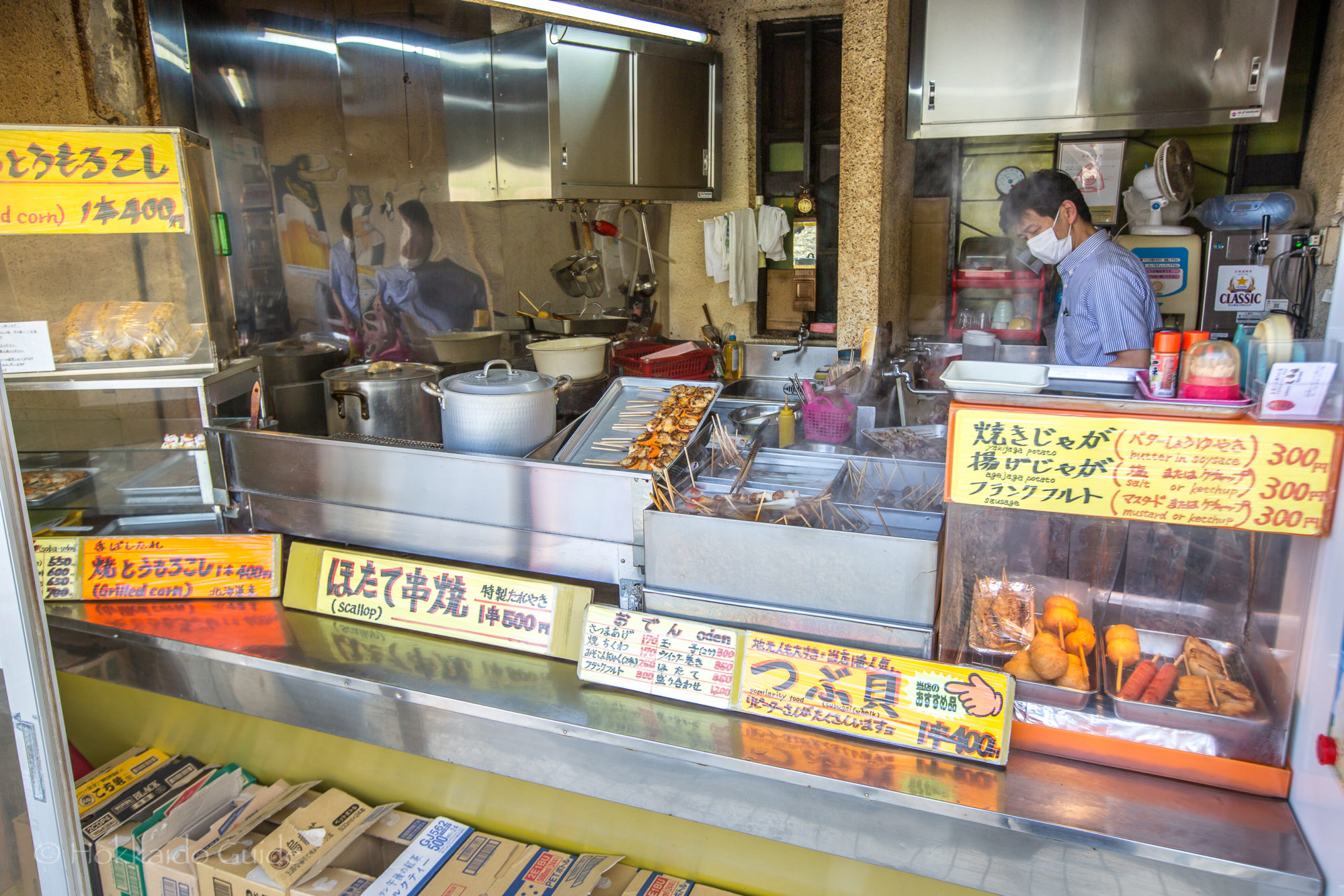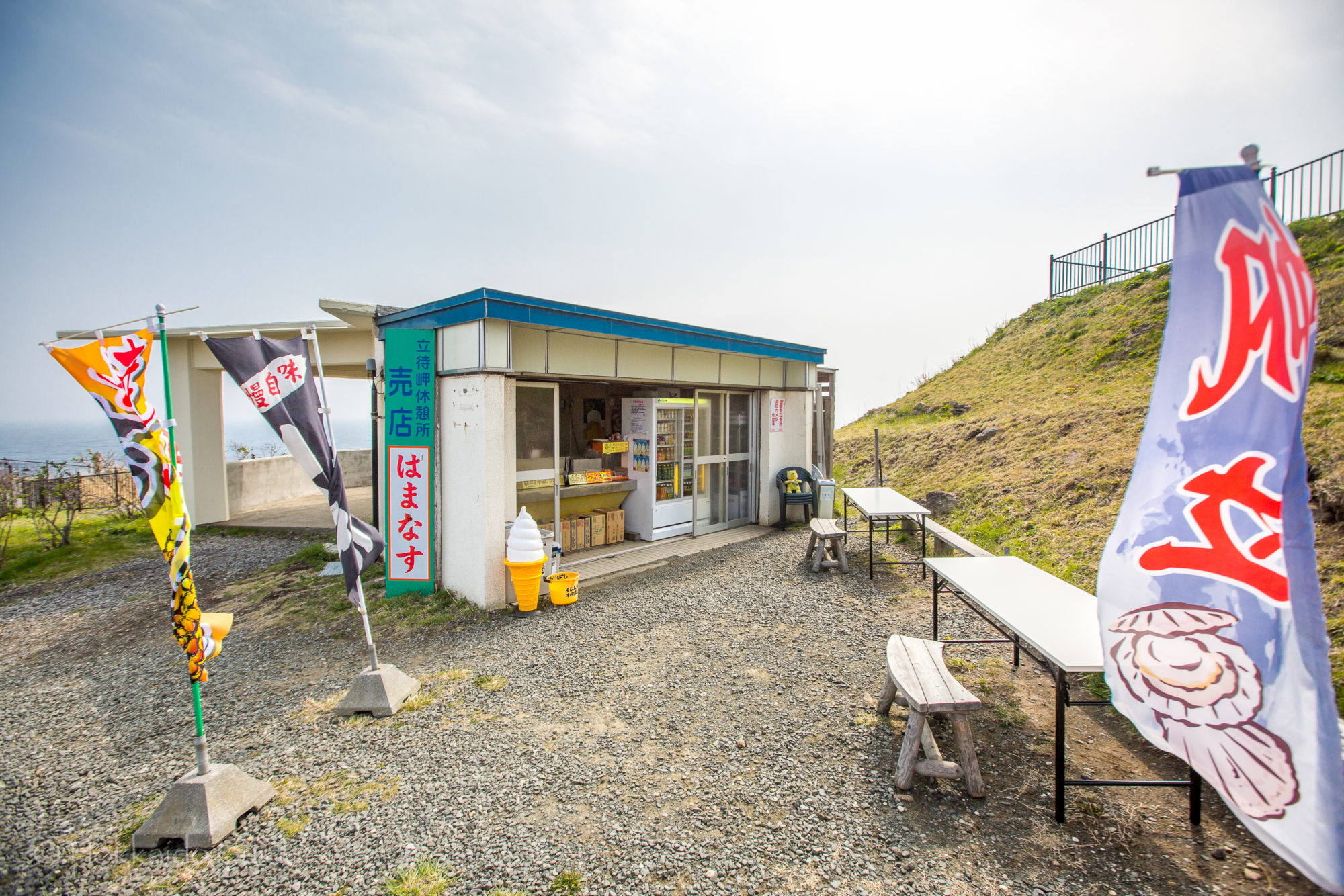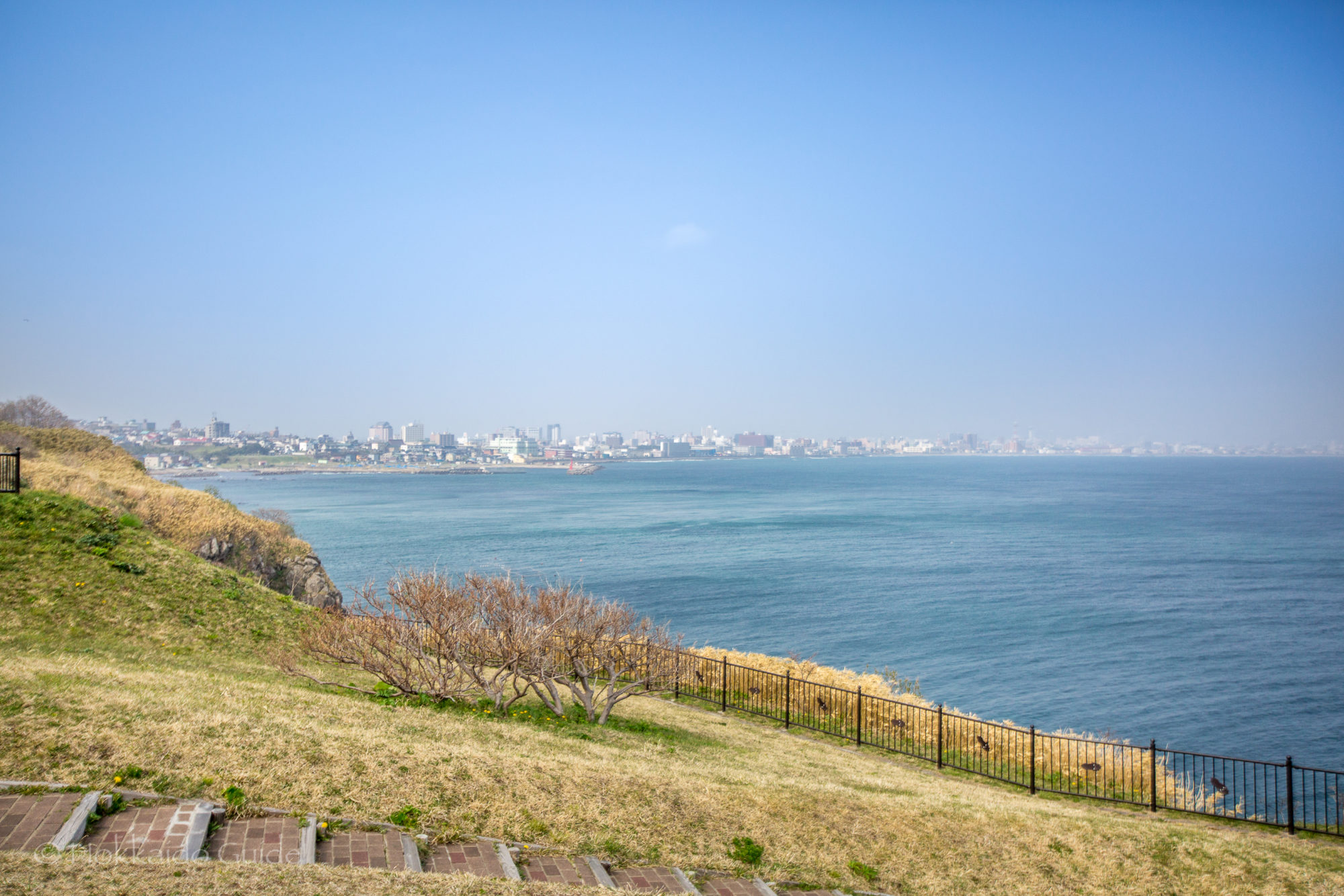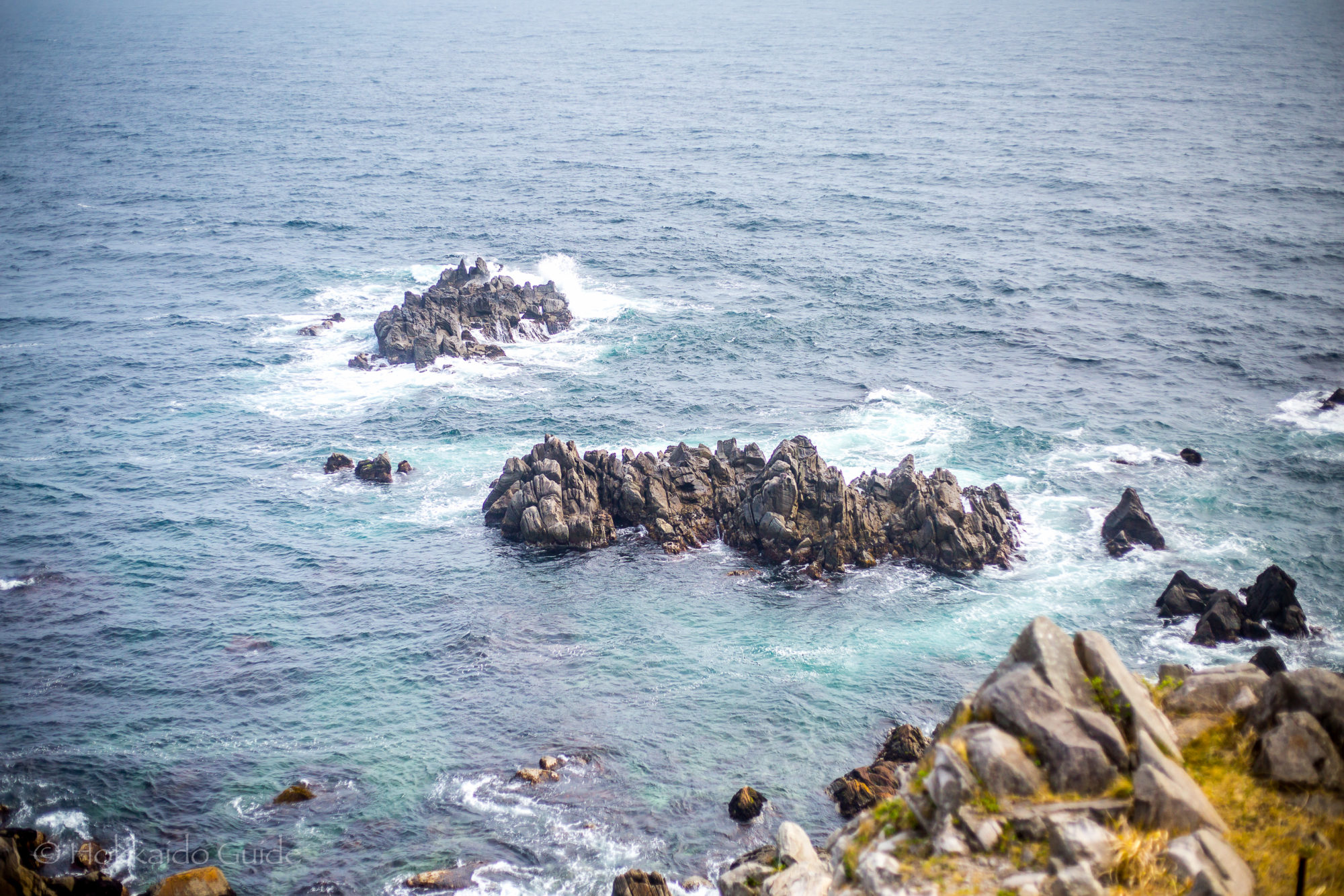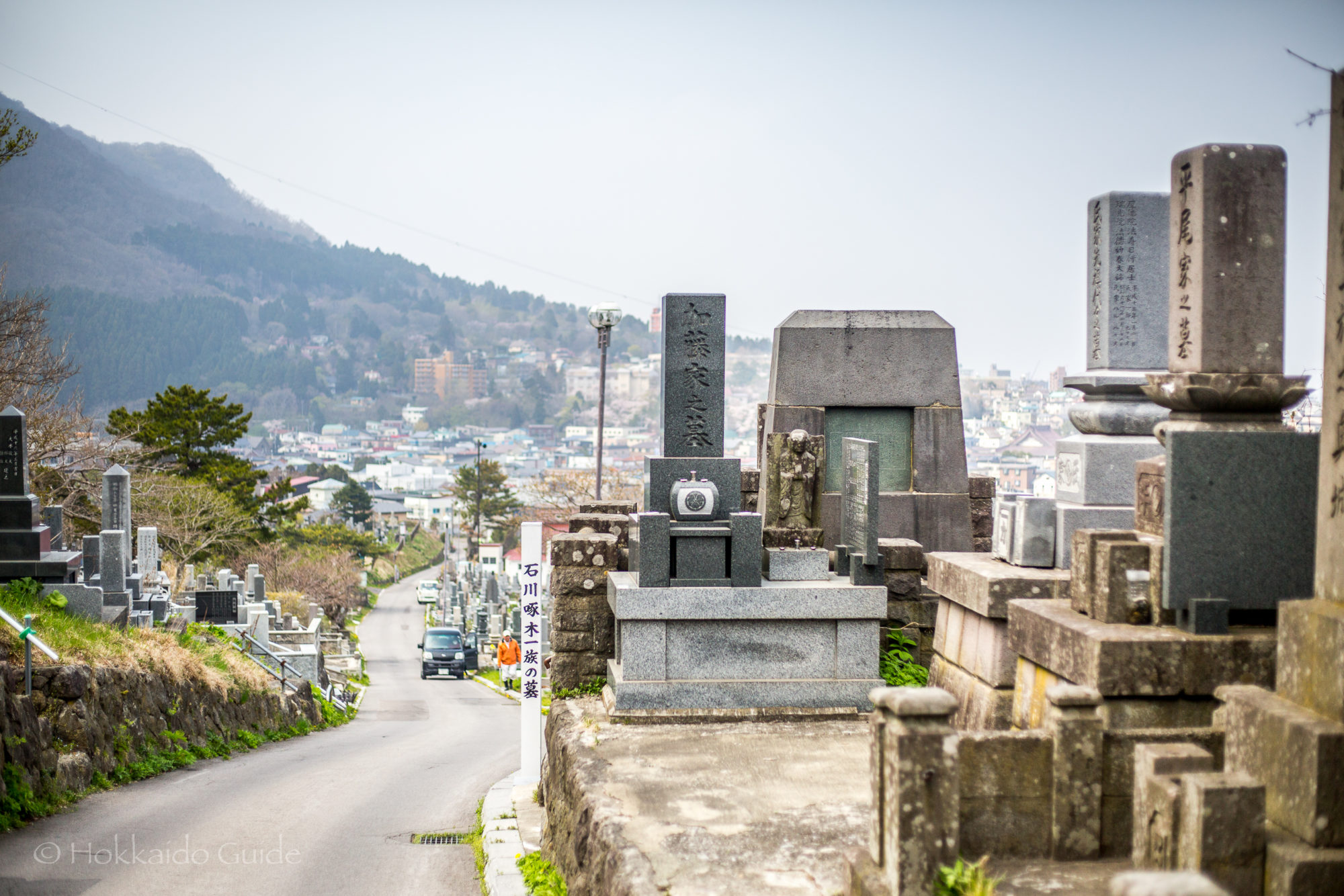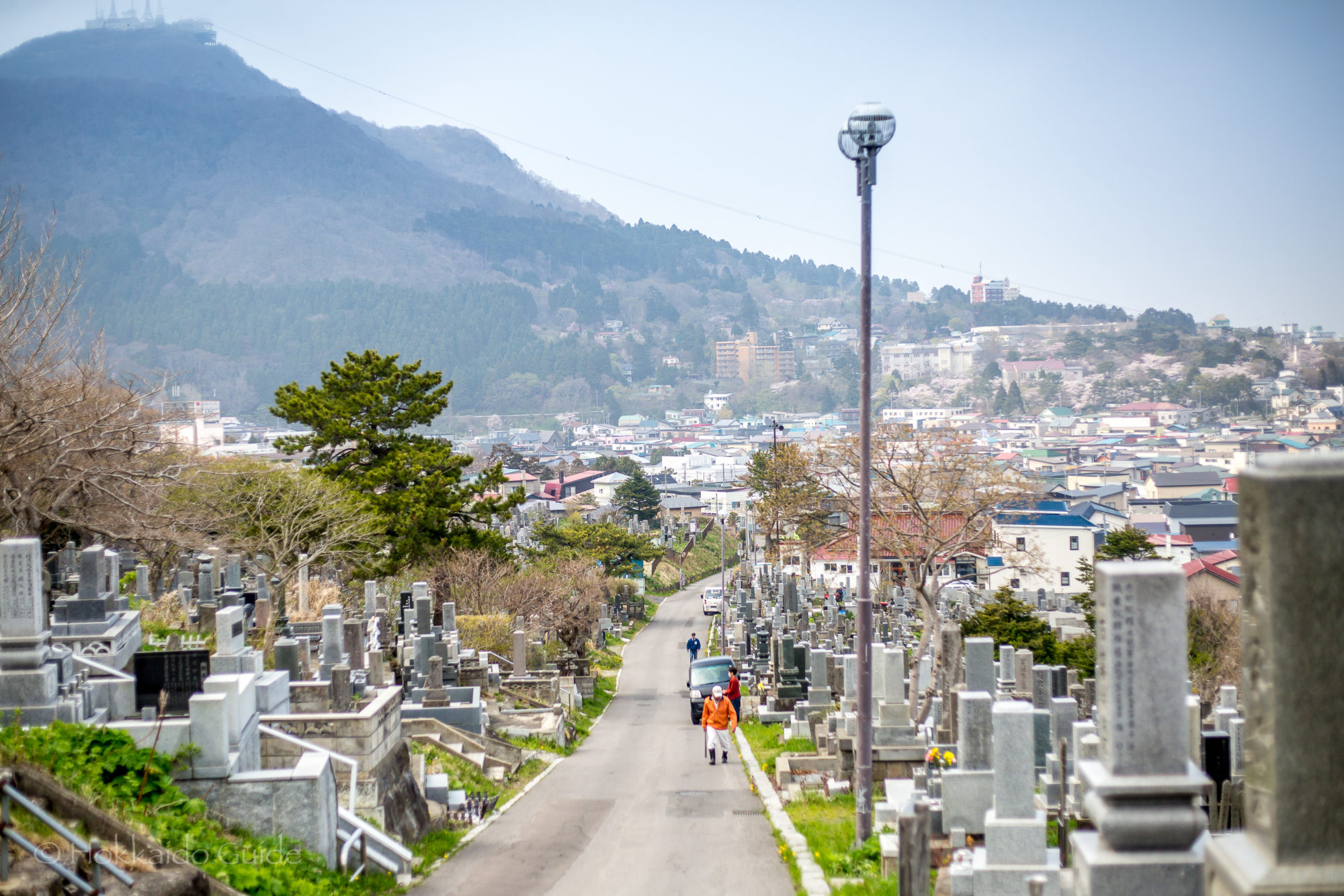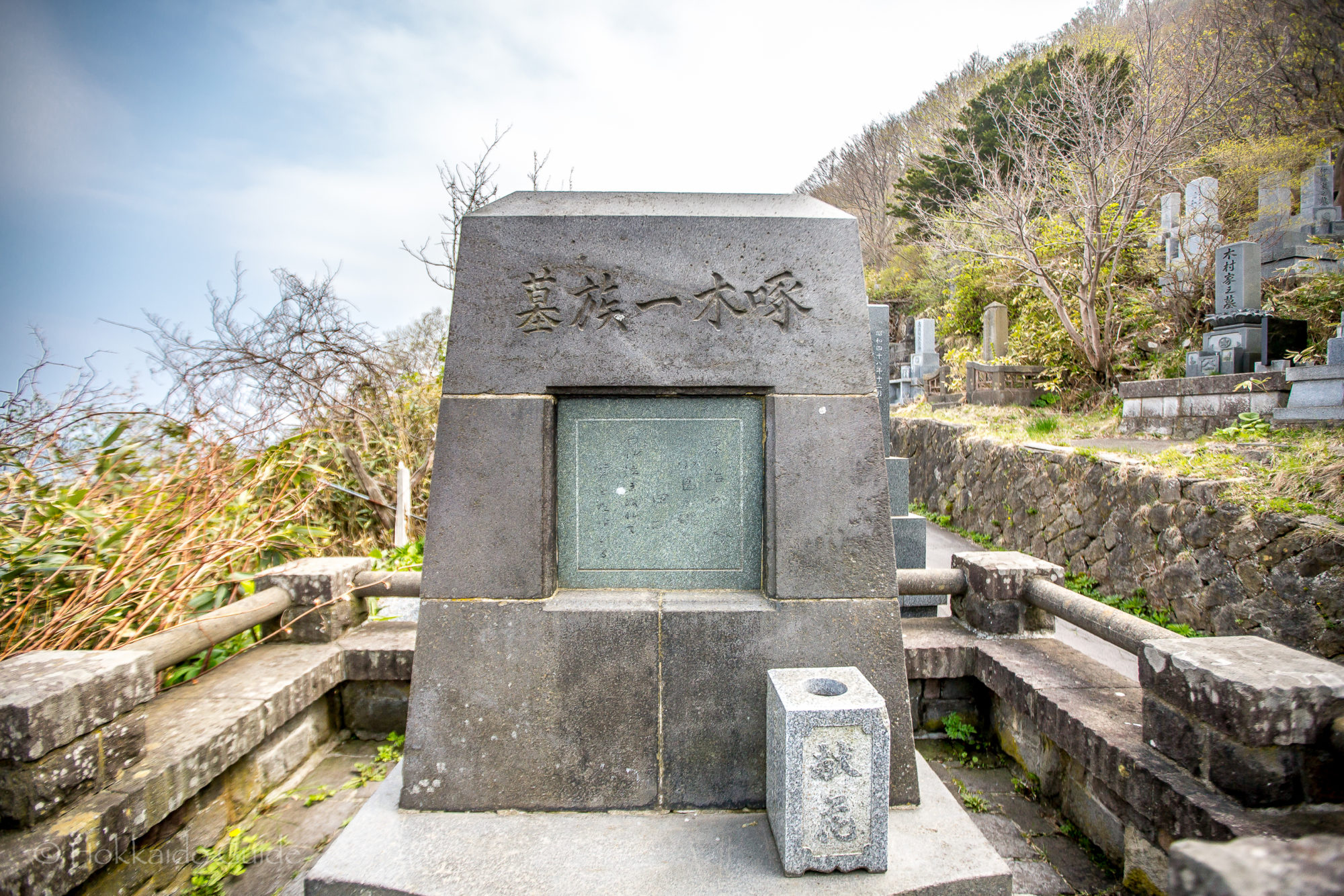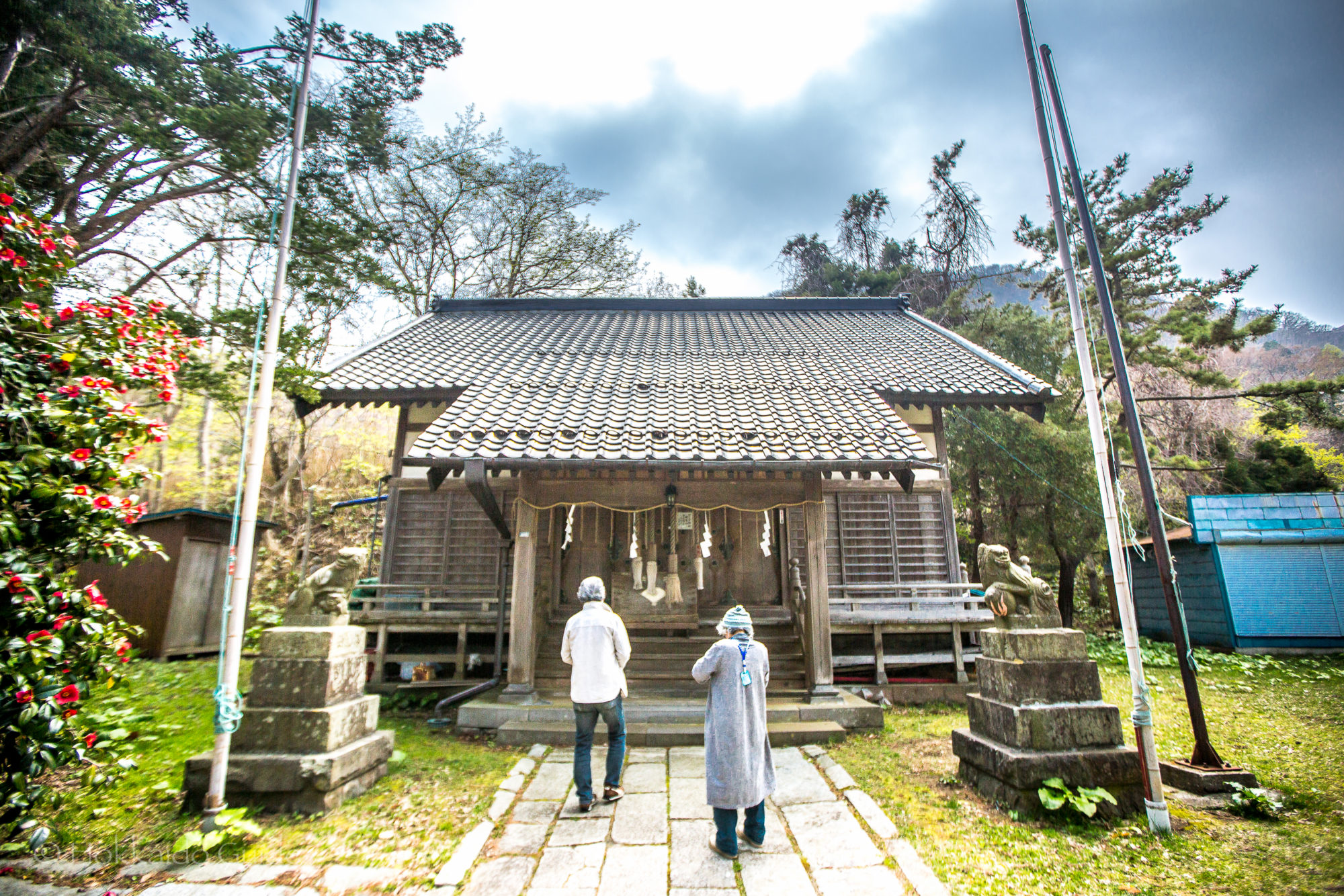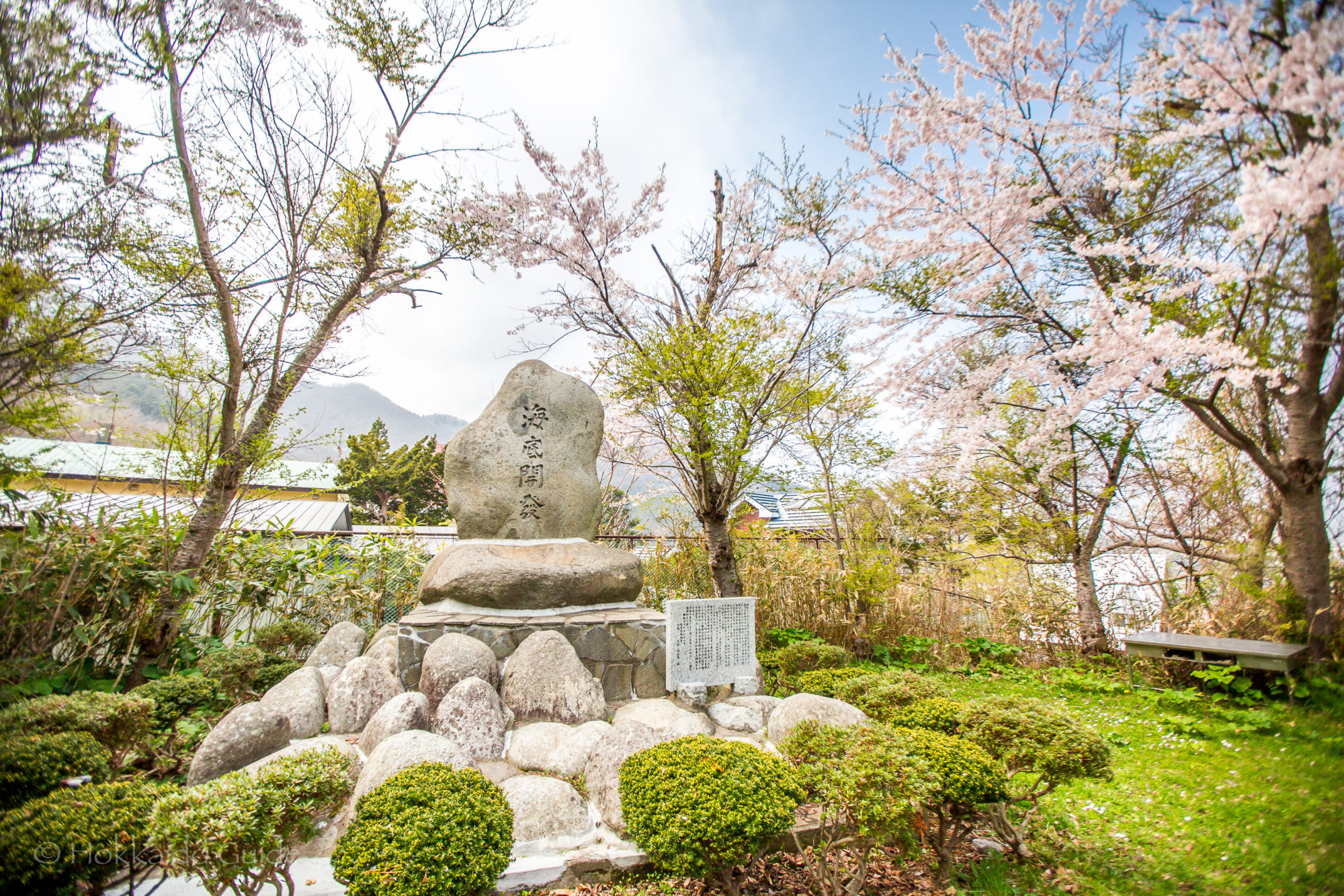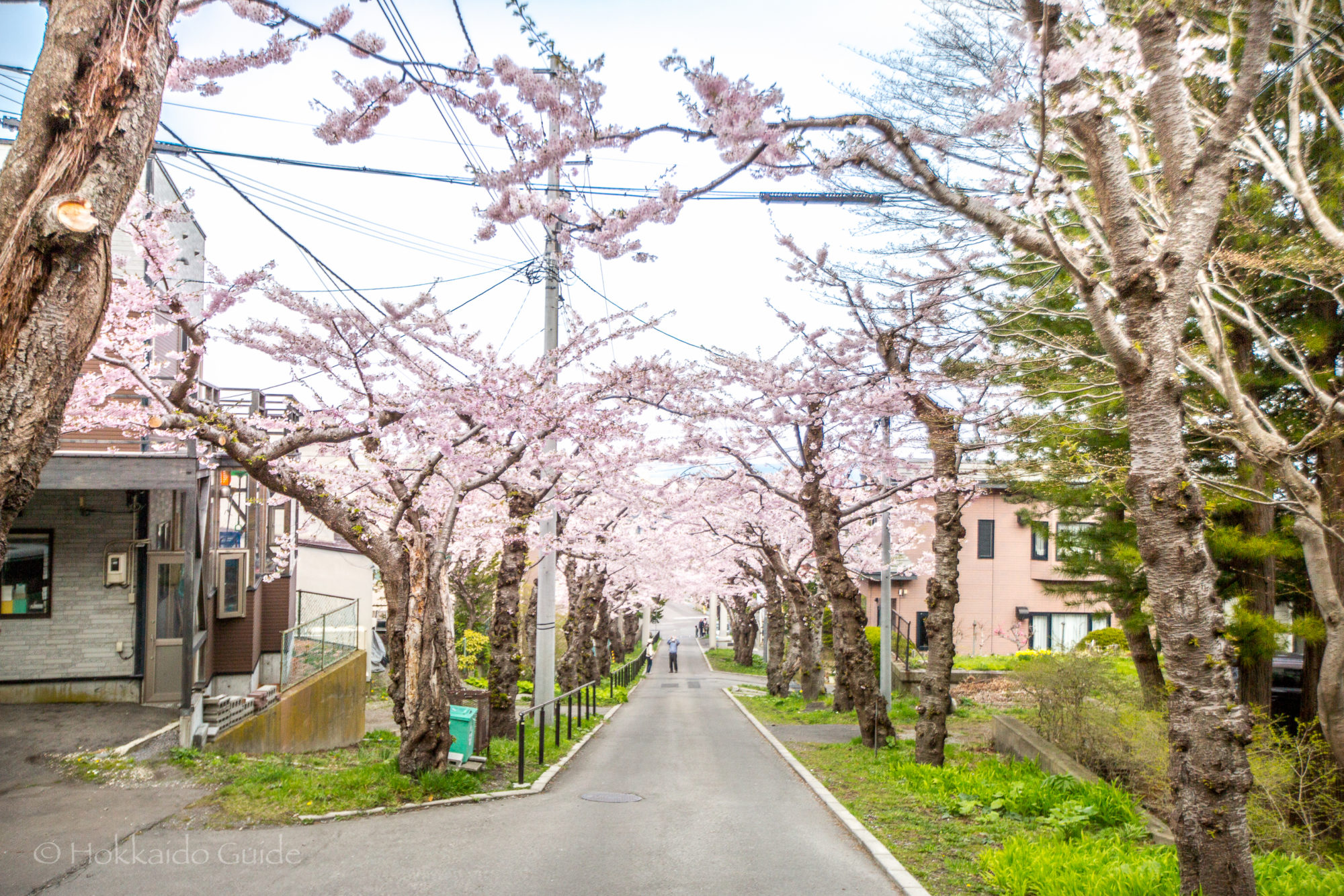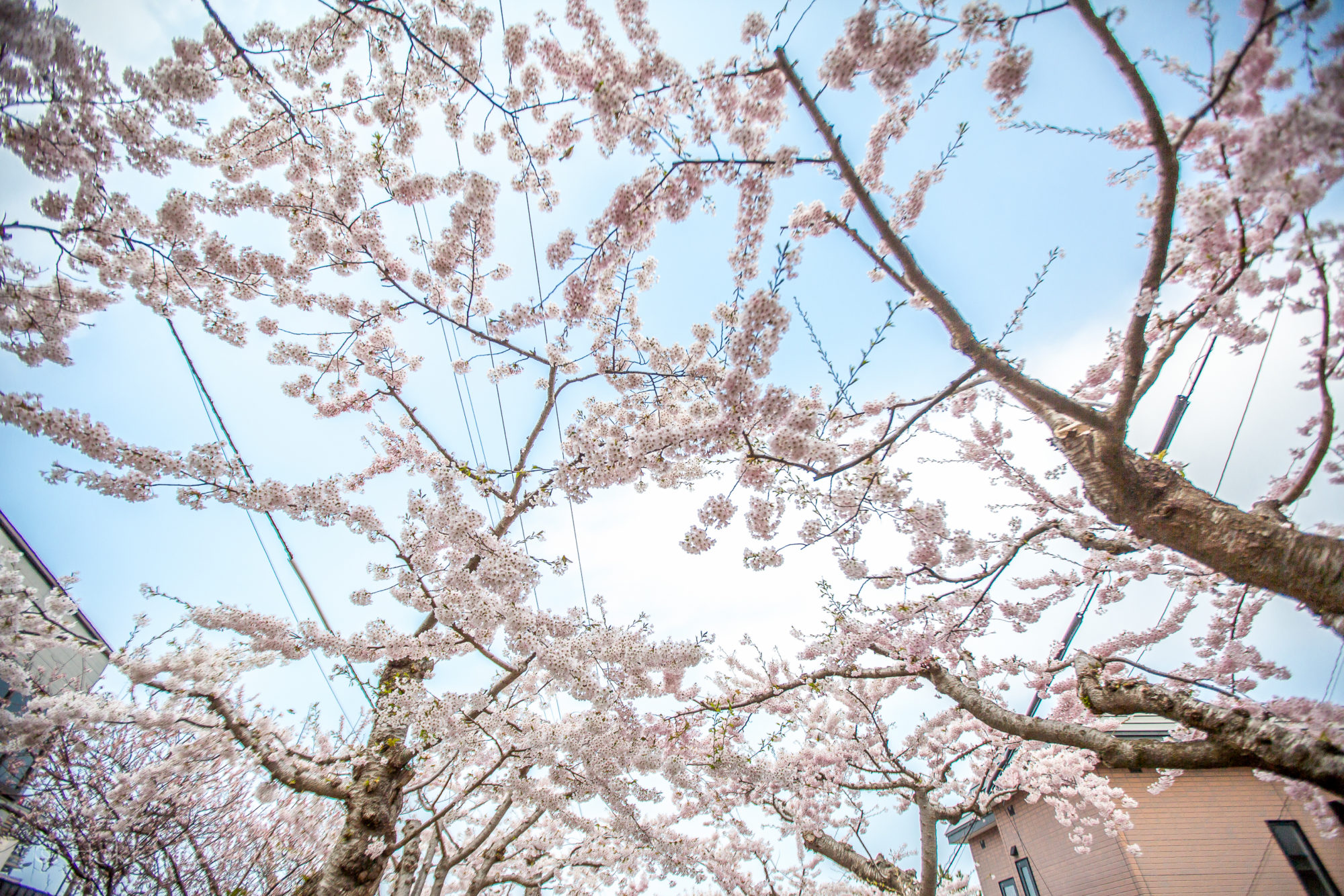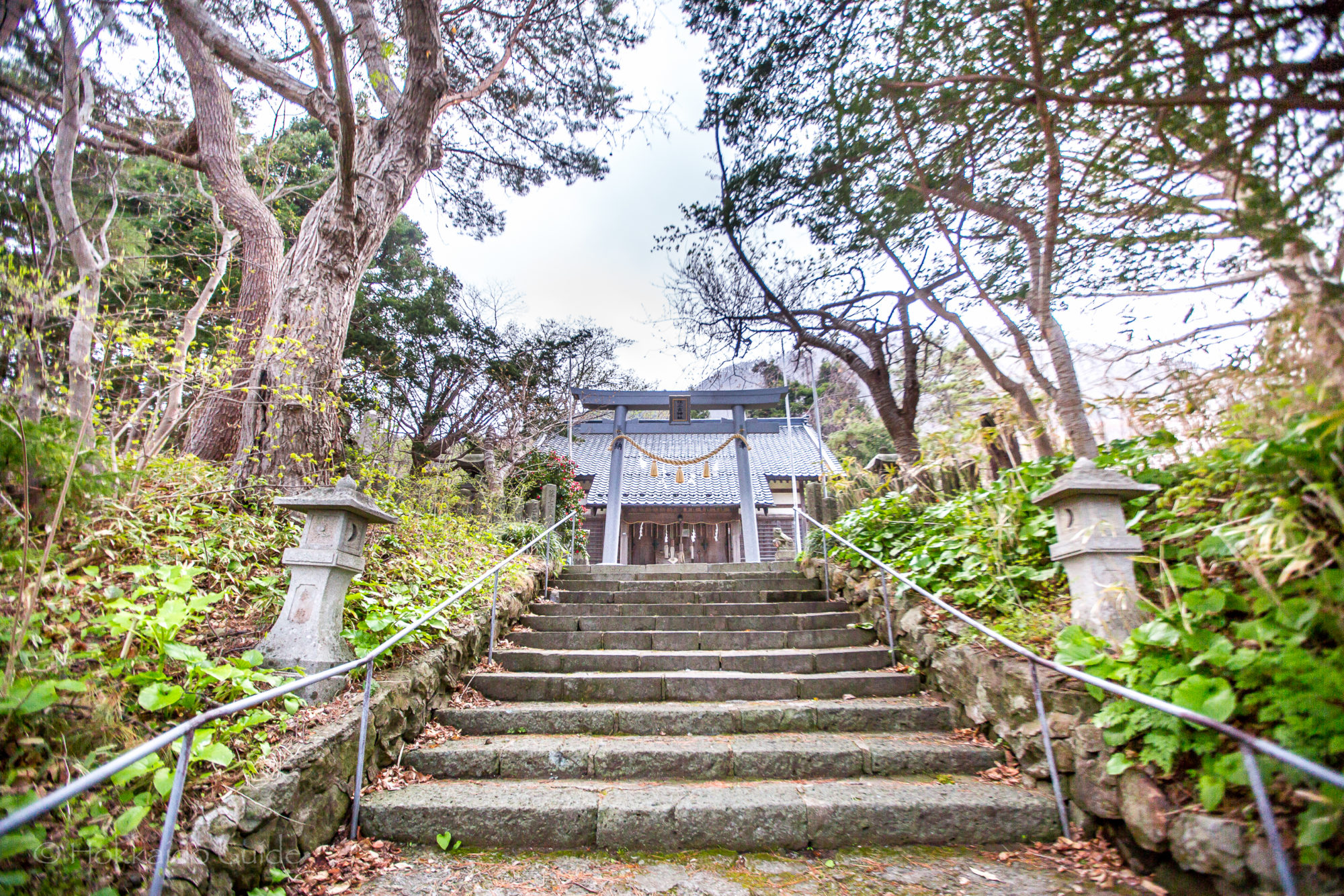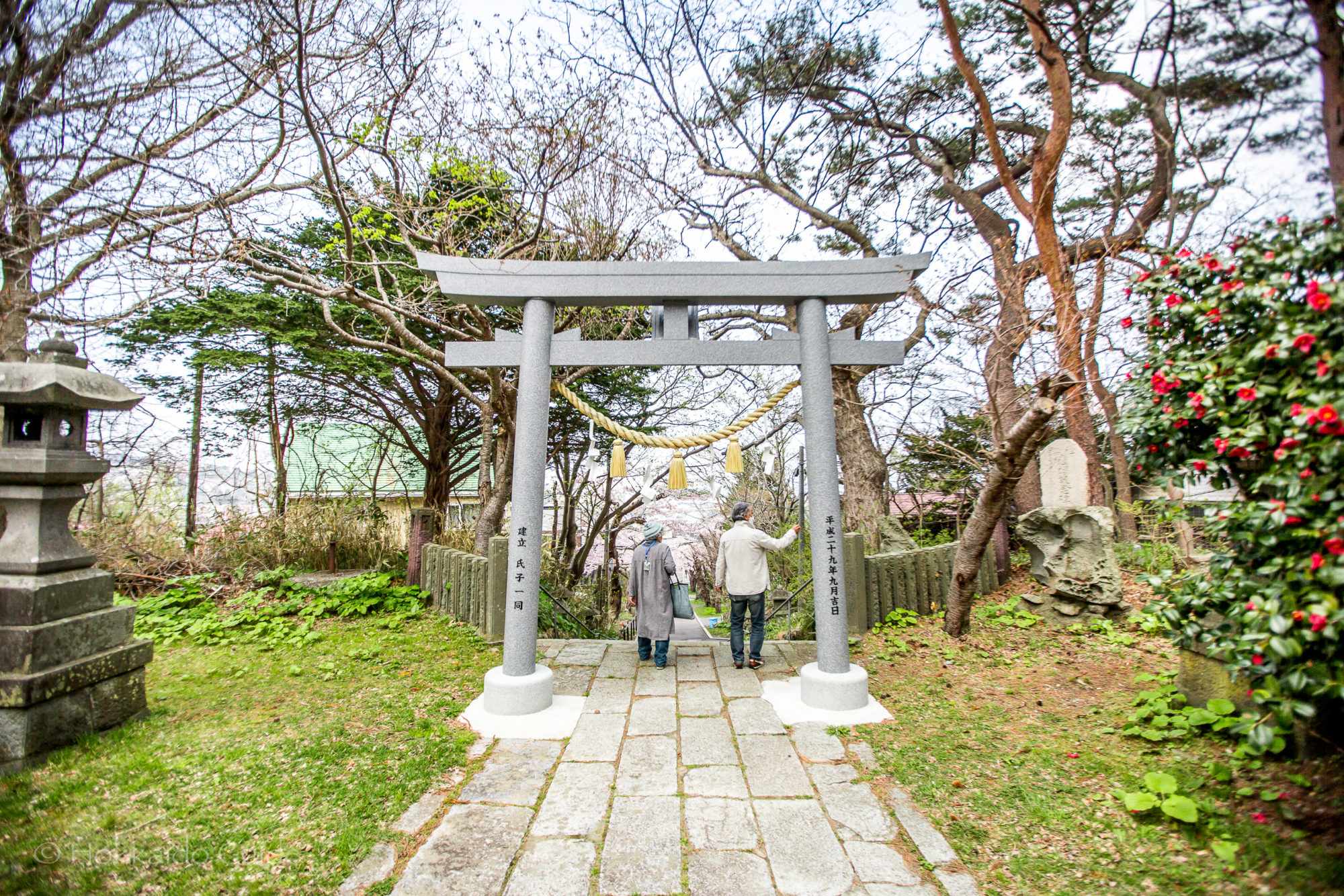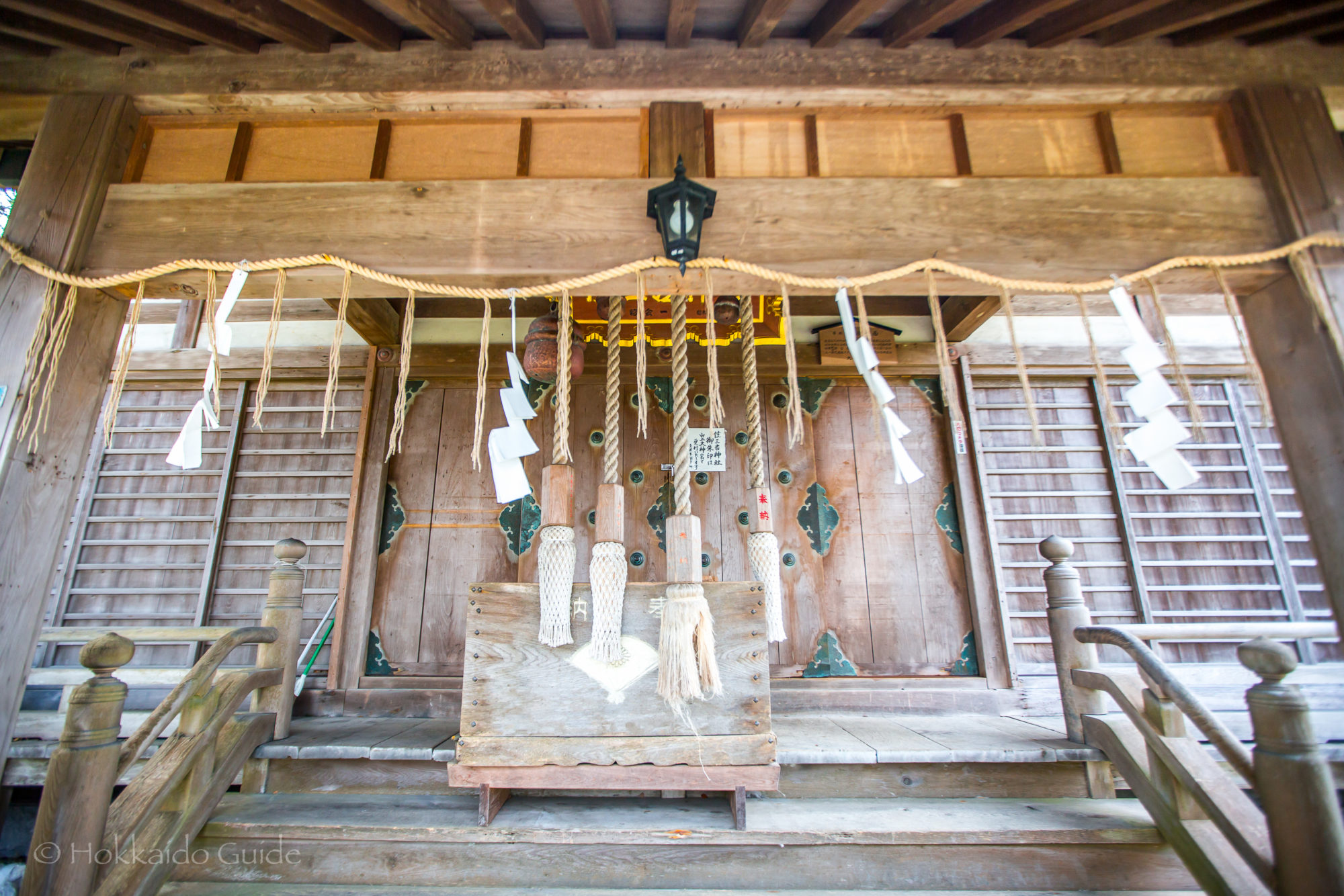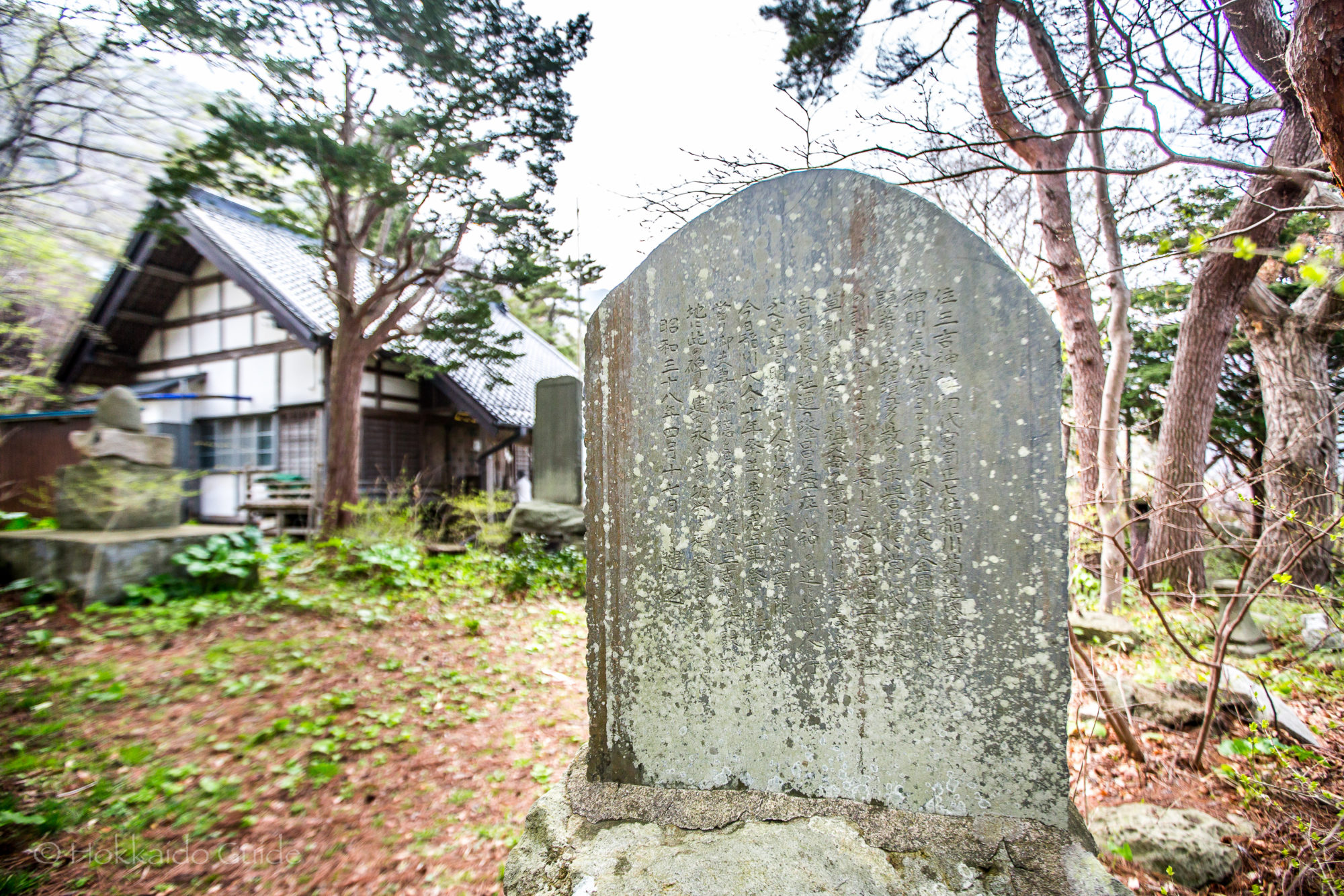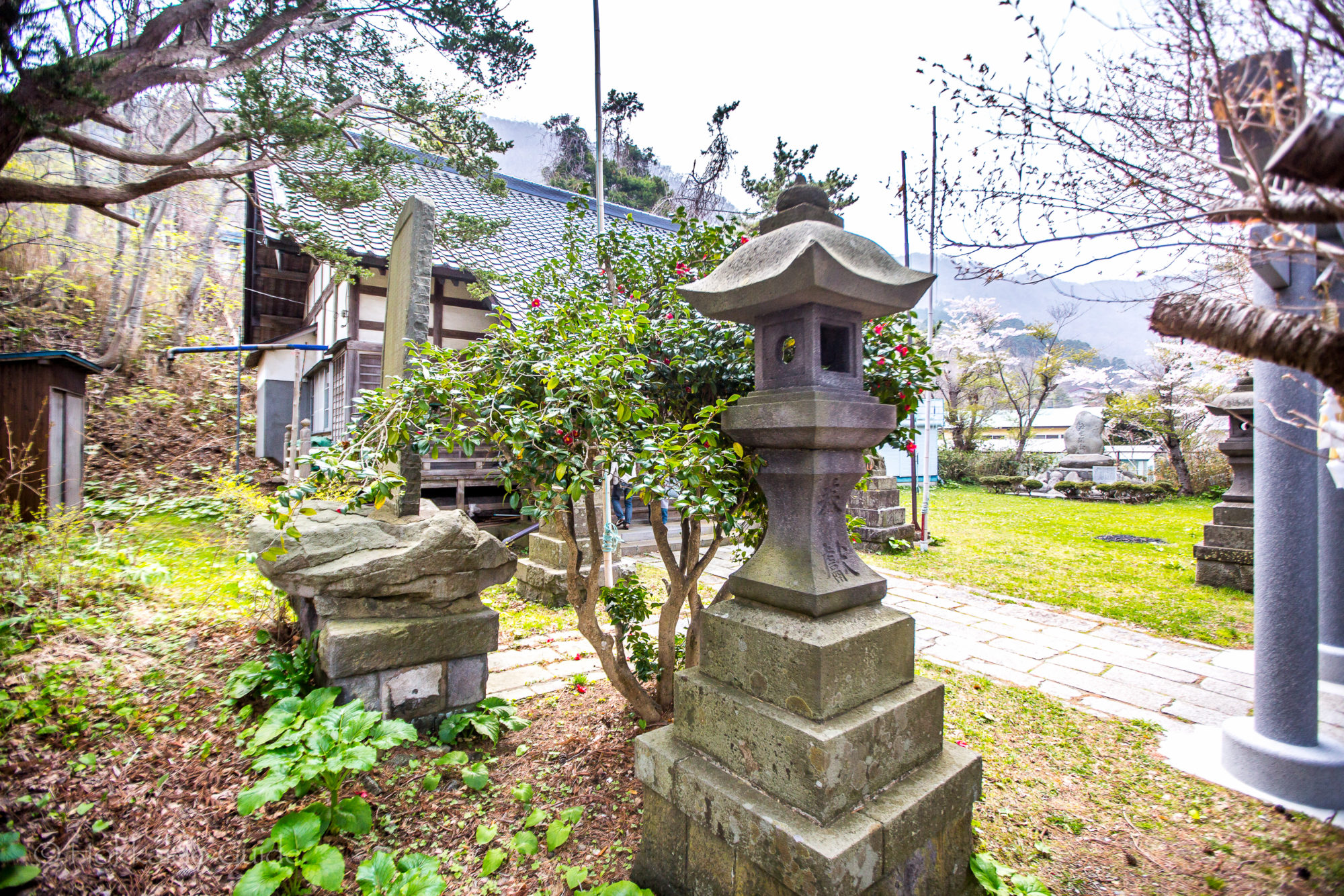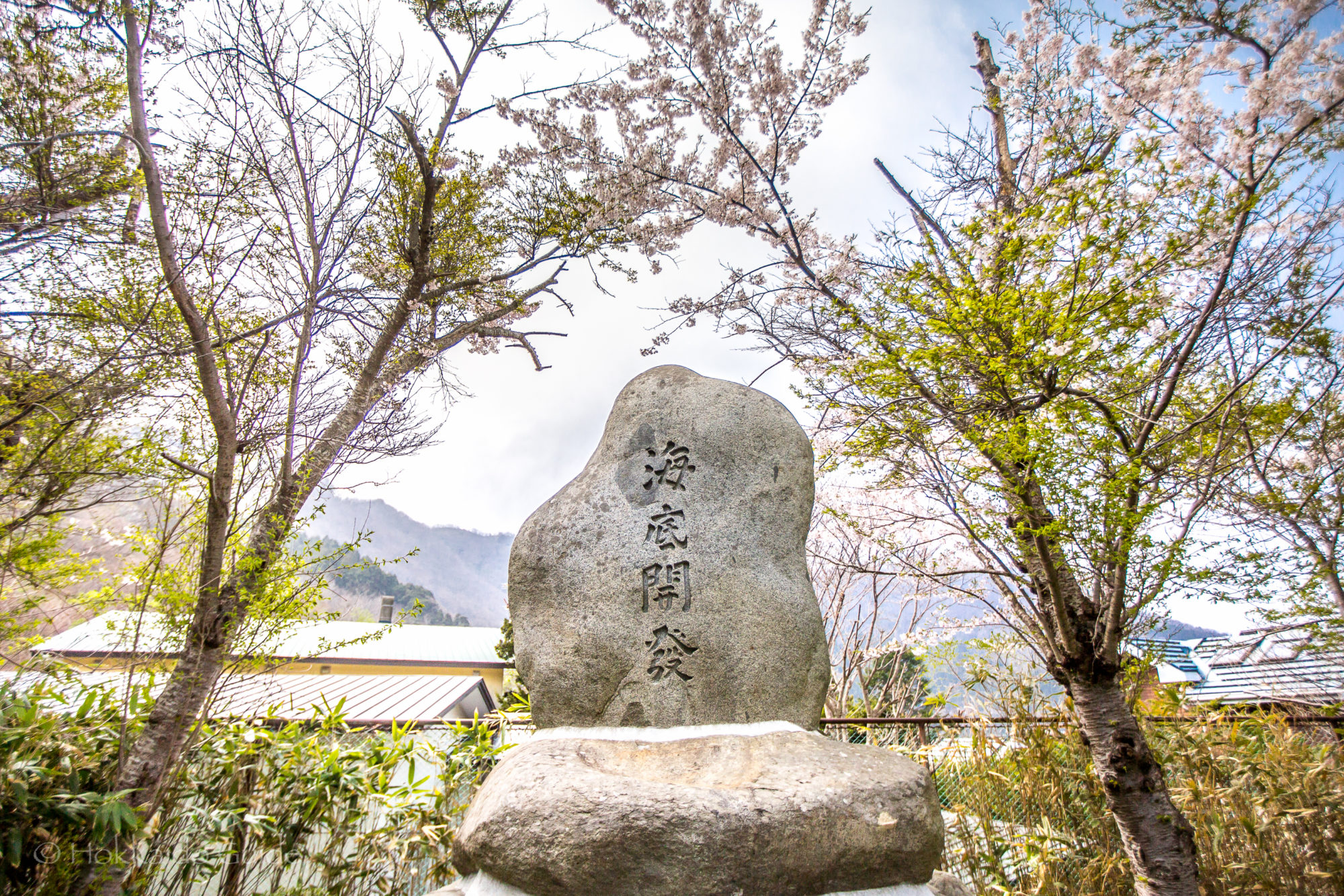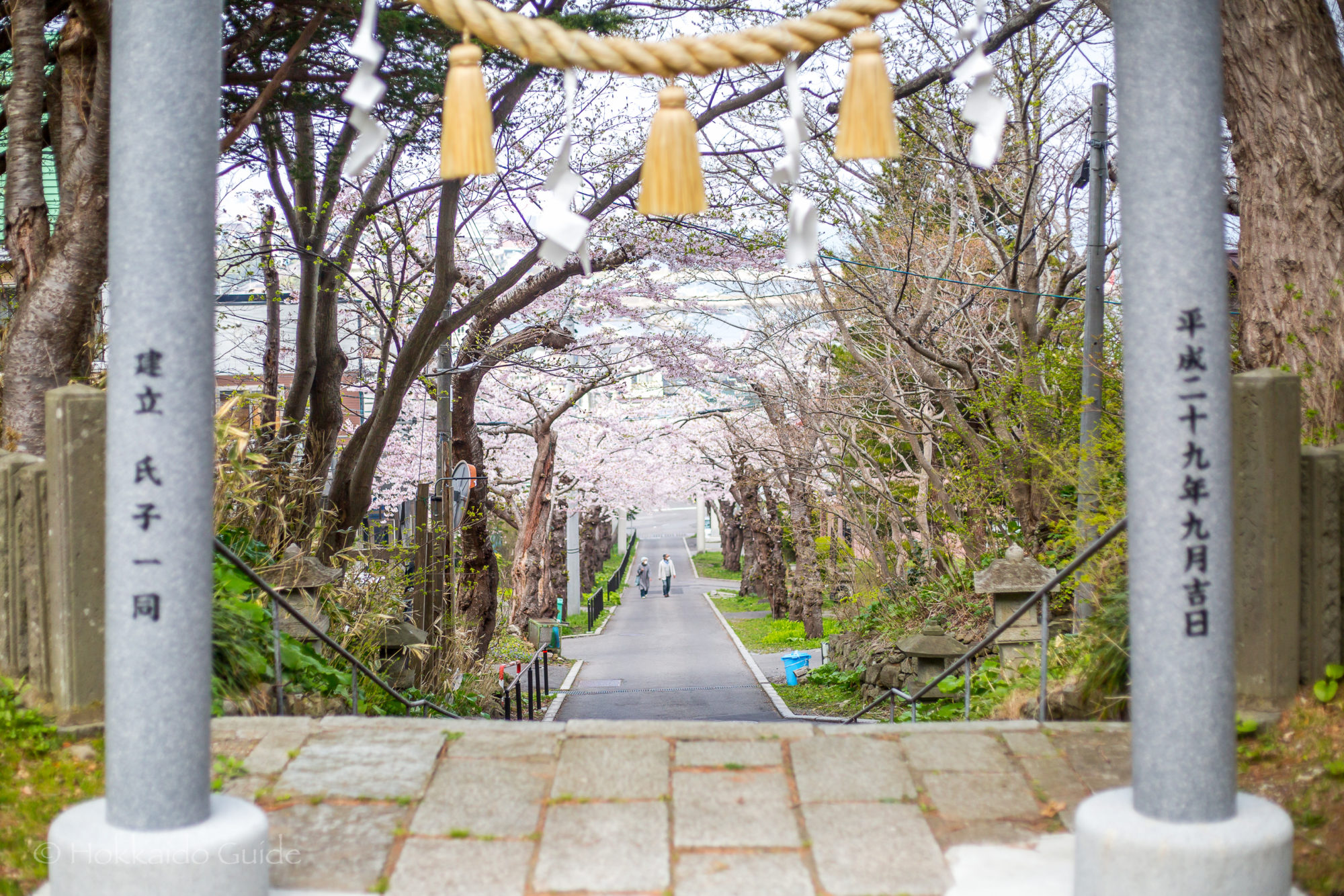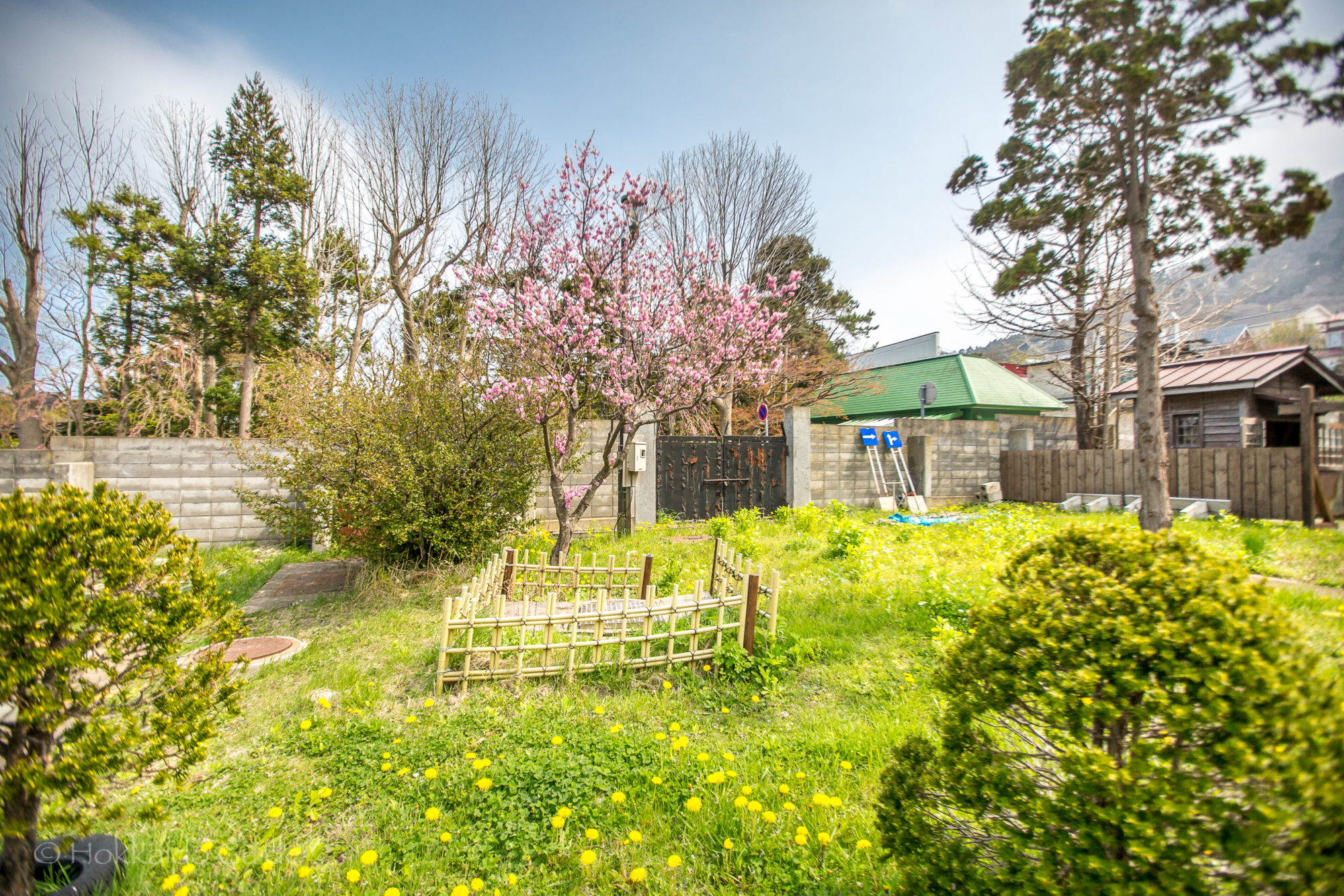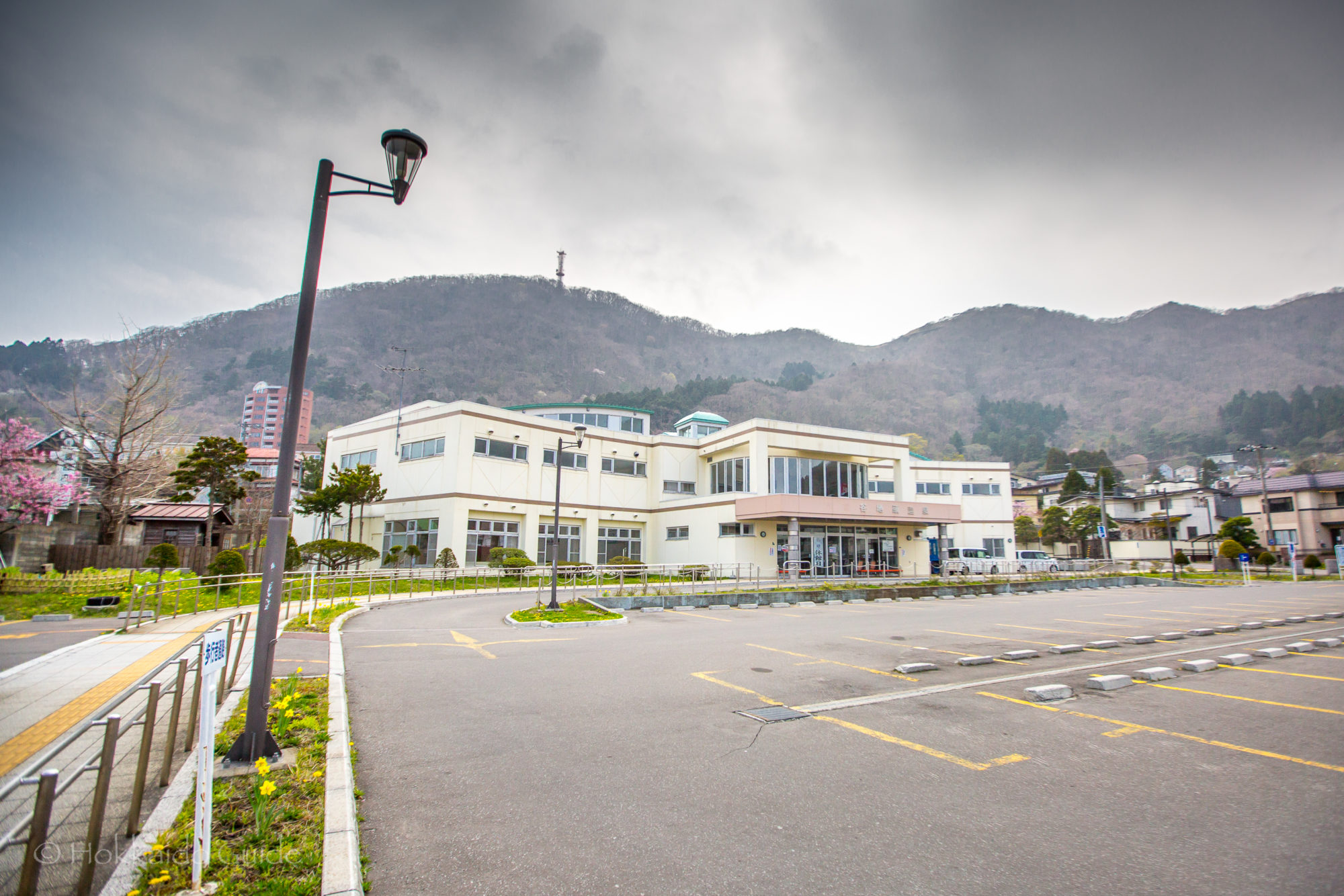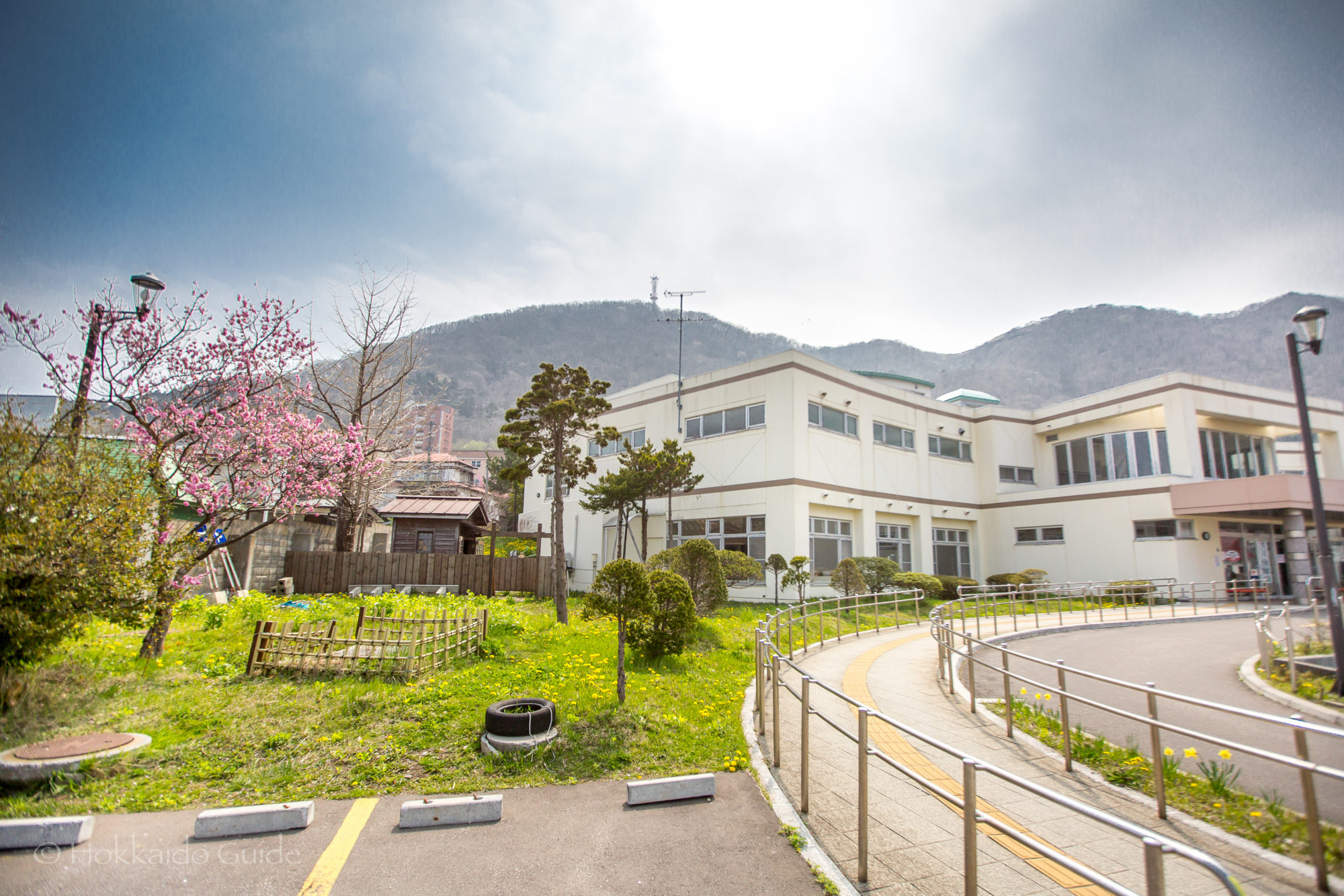
Tag: Southern Hokkaido
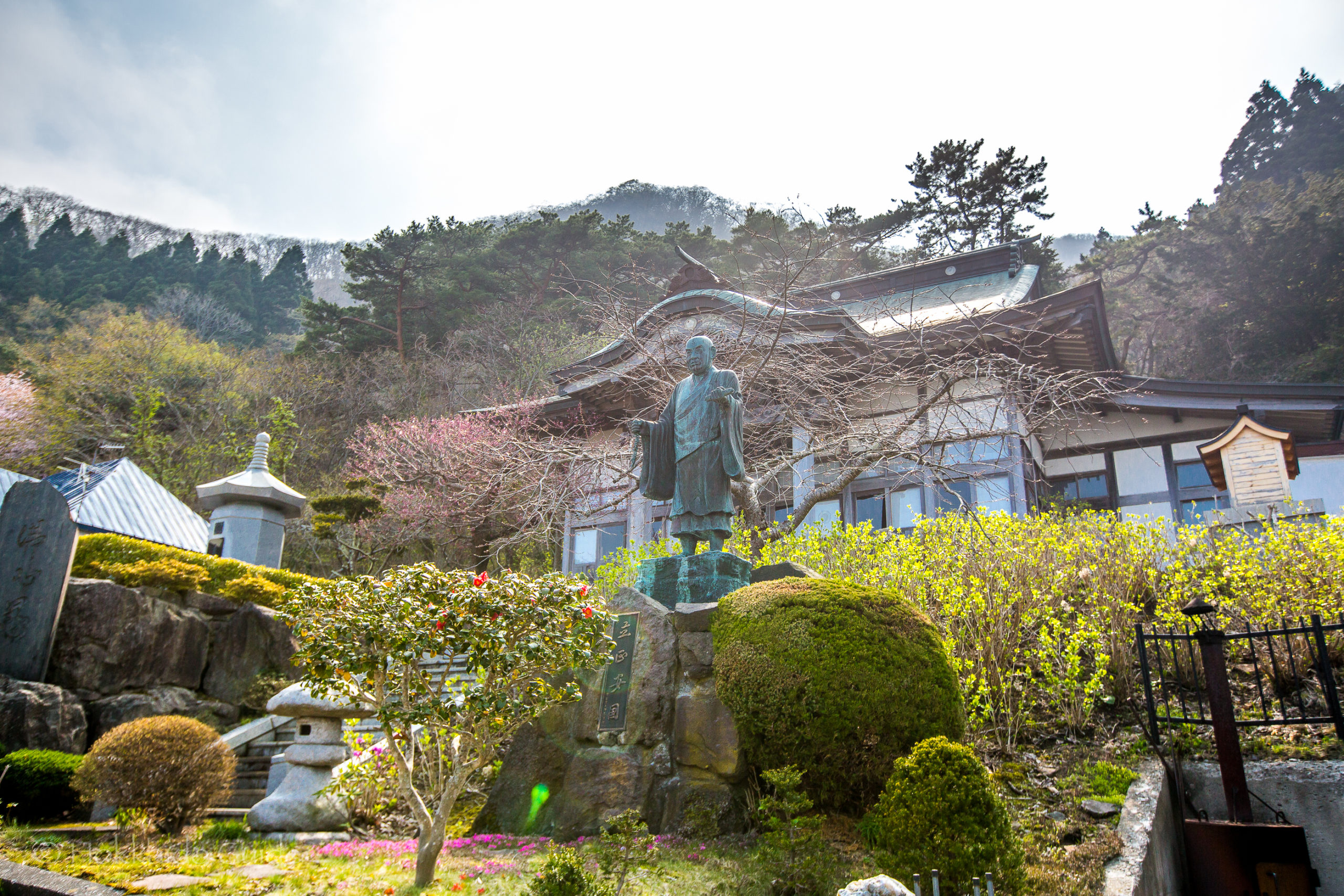
Gagyusanmyoshin Temple
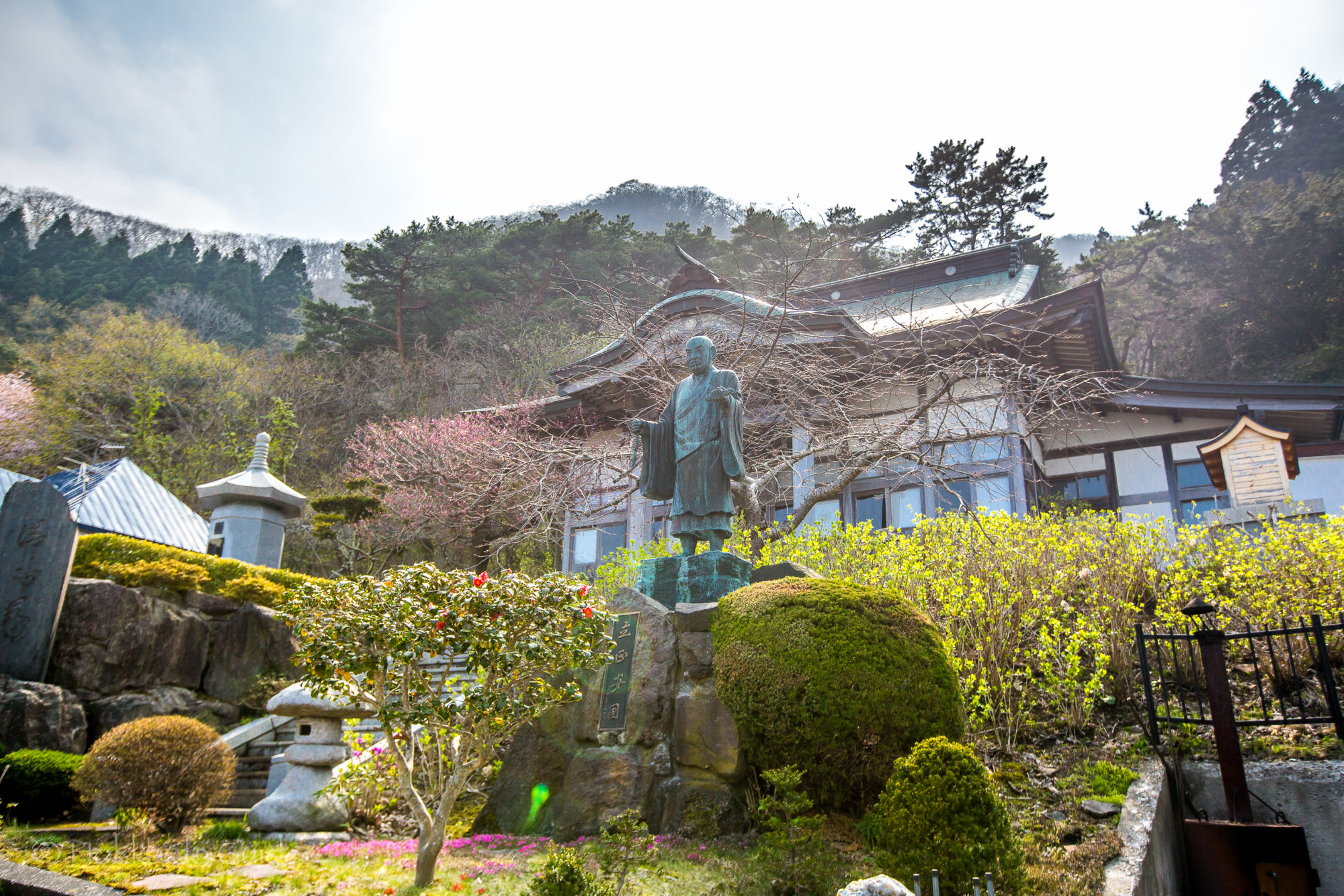
| Admission | Free |
| Opening Hours | - |
| Contact | 011-3822-6756 |
| Notes | Buddhist temple |
| Location / Getting There | Located in the southern part of Hakodate city near the base of Mt. Hakodate. For public transport, it is a 12 minute walk uphill from Yachigashira tram station (seven stops from Hakodate tram station). If driving there is a small parking spot. 〒040-0046 Hokkaido, Hakodate, Yachigashiracho, 1-2 Myoshinji |
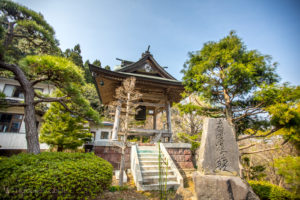 Gagyusanmyoshin Temple is a Buddhist temple tucked up in the hills of Mt. Hakodate. It is a large temple and being up on the slopes of Mt. Hakodate, has views overlooking the residential area of Hakodate. It is also on the way to the Hekketsu-hi Monument, which is a short walk away. The temple was founded by Wakamatsu Niizumi, who was born in 1915. As a child he had difficulty with his eyesight and his mother often prayed that he would be able to see. At the age of seven, he could finally open his eyes. From this experience, he devoted his life to the Buddhist faith.
Gagyusanmyoshin Temple is a Buddhist temple tucked up in the hills of Mt. Hakodate. It is a large temple and being up on the slopes of Mt. Hakodate, has views overlooking the residential area of Hakodate. It is also on the way to the Hekketsu-hi Monument, which is a short walk away. The temple was founded by Wakamatsu Niizumi, who was born in 1915. As a child he had difficulty with his eyesight and his mother often prayed that he would be able to see. At the age of seven, he could finally open his eyes. From this experience, he devoted his life to the Buddhist faith.
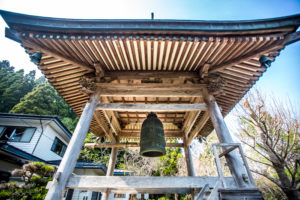 He was a priest in Hakodate City, and in the spring of 1946, the temple was founded. For those practicing the Buddhist faith, there is a special red stamp that can be received on arrival. Throughout the temple and on the grounds, there are various statues and memorials. Each has their own special significance. There is a bell tower, with the large bell being rung at 6:30 and at 18:00 everyday. Throughout the year there are various events held. The most interesting being the ‘Yuan Dynasty Visit’ which is the New Year’s first prayer meeting. This festival sees brave souls pouring water over themselves in the cold winter weather. For other festivals, read below.
He was a priest in Hakodate City, and in the spring of 1946, the temple was founded. For those practicing the Buddhist faith, there is a special red stamp that can be received on arrival. Throughout the temple and on the grounds, there are various statues and memorials. Each has their own special significance. There is a bell tower, with the large bell being rung at 6:30 and at 18:00 everyday. Throughout the year there are various events held. The most interesting being the ‘Yuan Dynasty Visit’ which is the New Year’s first prayer meeting. This festival sees brave souls pouring water over themselves in the cold winter weather. For other festivals, read below.
| January | Yuan Dynasty Visit New Year's first prayer meeting |
| February | Cold training Star Festival Setsubun Religious Party |
| March | Higankai |
| April | Spring festival |
| July | Ranbonkai Summer Vacation training dojo Mizuko Kyokai |
| September | Higankai |
| October | Autumn festival |
| November | Daikokutenjin festival |
| December | Boil up, Joya no Kane |
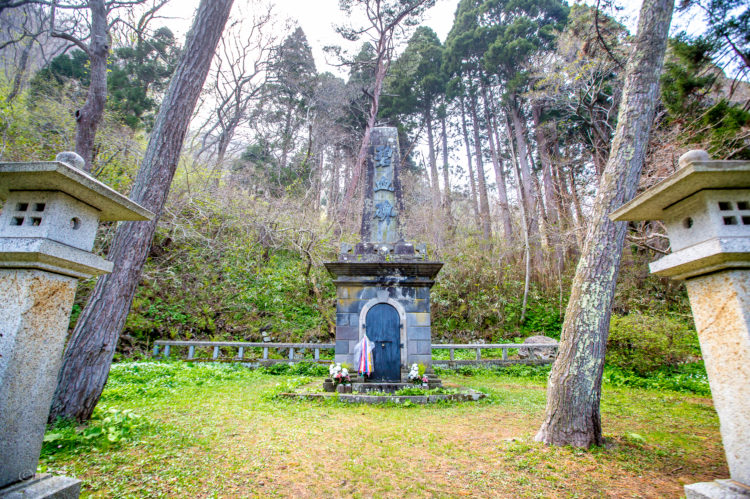
Hekketsu-hi Monument

| Admission | Free |
| Opening Hours | - |
| Contact | - |
| Notes | Historical site, no parking |
| Location / Getting There | Located in the southern part of Hakodate city near the base of Mt. Hakodate. There is no parking here so it's a little tricky but you can find some parking around the shrines nearby and take the path up to the site. For public transport, it is a 15 minute walk uphill from Yachigashira tram station (seven stops from Hakodate tram station). 5-14 Yachigashiracho, Hakodate, Hokkaido 040-0046 |
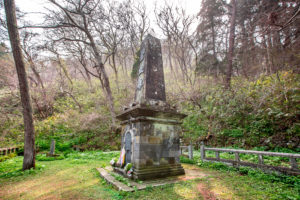 The Hekketsu Monument is the centre piece for the burial and tribute for the 800 samurai and their leaders who died fighting against government forces in the Boshin War. This war included, specifically, the Battle of Hakodate. This battle in 1869 was the samurai’s last stand. The government forces were intent on restoring the emperor to the throne and overthrowing the military rule of the Shogunate and the samurai. The monument here is made from stone brought up from Tokyo. The word ‘Hekketsu’ is derived from an old Chinese saying, “the blood of warriors who die for their lord turns blue after three years.”
The Hekketsu Monument is the centre piece for the burial and tribute for the 800 samurai and their leaders who died fighting against government forces in the Boshin War. This war included, specifically, the Battle of Hakodate. This battle in 1869 was the samurai’s last stand. The government forces were intent on restoring the emperor to the throne and overthrowing the military rule of the Shogunate and the samurai. The monument here is made from stone brought up from Tokyo. The word ‘Hekketsu’ is derived from an old Chinese saying, “the blood of warriors who die for their lord turns blue after three years.”
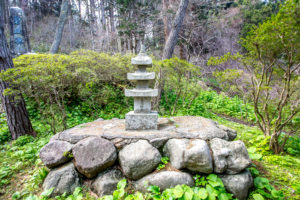 Toshizo Hijikata who led the samurai in the final Battle of Hakodate was killed during this fight. This monument is also erected in his memory. His death poem reads “though my body may decay on the island of Ezo, my spirit guards my lord in the East.” In the aftermath of the battle, the bodies of the Shogunate forces were originally left on the streets and any burial or religious service was prohibited. The bodies were eventually moved to this current site. The government forces dead were buried at Hakodate Gokoku Shrine, which is not a far walk from here. This grassland in the forest is a peaceful and relaxing spot with a quiet stillness and is worth a visit. This site is not far from the shrines lower down on the hill and is better accessed from Gagyusan Myoshin Temple or the shrine of Hachiman-gu.
Toshizo Hijikata who led the samurai in the final Battle of Hakodate was killed during this fight. This monument is also erected in his memory. His death poem reads “though my body may decay on the island of Ezo, my spirit guards my lord in the East.” In the aftermath of the battle, the bodies of the Shogunate forces were originally left on the streets and any burial or religious service was prohibited. The bodies were eventually moved to this current site. The government forces dead were buried at Hakodate Gokoku Shrine, which is not a far walk from here. This grassland in the forest is a peaceful and relaxing spot with a quiet stillness and is worth a visit. This site is not far from the shrines lower down on the hill and is better accessed from Gagyusan Myoshin Temple or the shrine of Hachiman-gu.
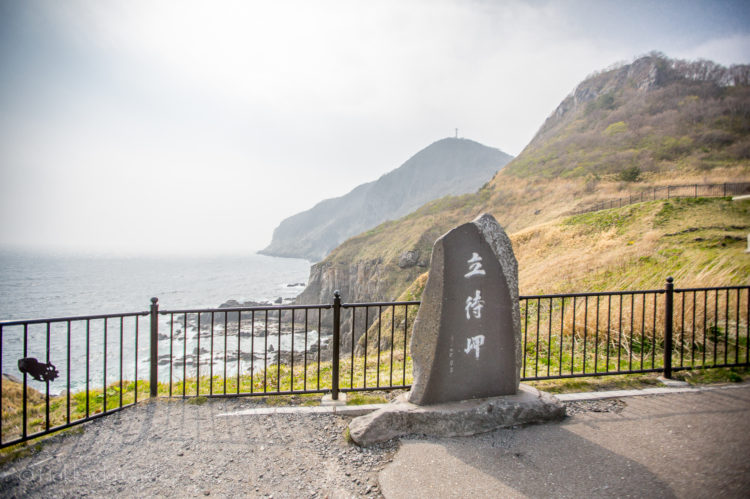
Cape Tachimachi

| Admission | Free |
| Opening Hours | Open 24 hours |
| Contact | 011-3821-3323 |
| Notes | Sightseeing spot, parking for 40 (closed in winter), food stall on site, historical landmark |
| Location / Getting There | Located in the southern part of Hakodate city on the bluff. It's about a 20 minute drive south west, from Goryōkaku Park. If you need public transport, the closest station is Yachigashira tram station (seven stops from Hakodate tram station). From here it is a 16 minute walk south. 9-9 Sumiyoshicho, Hakodate, Hokkaido 040-0045 |
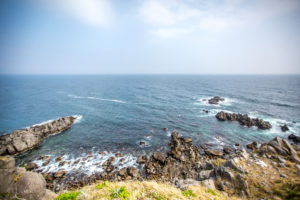 Cape Tachimachi is on the south east side of the Hakodate headland. Rising thirty meters above sea level, Cape Tachimachi has beautiful views over the Tsugaru Strait. The word ‘Tachimachi’ is derived from the Ainu word ‘Yokoushi’ which means, a place to wait and catch fish. There is a small lookout point with equally stunning views down the coast. This cape is part of Hanamasu Park. The park is full of pink Hanamasu flowers which are indigenous to Hokkaido. On the way to the park, you pass through the Hakodate Shiei Sumiyoshimachi Kyodo Cemetery and the Grave of Ishikawa Takuboku, which is a fascinating area.
Cape Tachimachi is on the south east side of the Hakodate headland. Rising thirty meters above sea level, Cape Tachimachi has beautiful views over the Tsugaru Strait. The word ‘Tachimachi’ is derived from the Ainu word ‘Yokoushi’ which means, a place to wait and catch fish. There is a small lookout point with equally stunning views down the coast. This cape is part of Hanamasu Park. The park is full of pink Hanamasu flowers which are indigenous to Hokkaido. On the way to the park, you pass through the Hakodate Shiei Sumiyoshimachi Kyodo Cemetery and the Grave of Ishikawa Takuboku, which is a fascinating area.
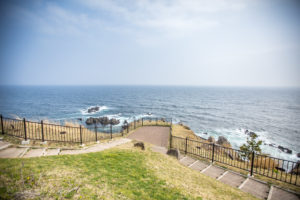 There is ample free parking here, though in the winter the parking may be closed from 16:00 during heavy snow in the winter. This spot is great to wander around, plus there are a couple of benches to take a seat and admire the views. There is a small food stall on the cape. They sell scallops, grilled corn, oden, potatoes and some local seafood sticks. All costing around ¥300. Other points of interest include monuments to Okada Kenzo, which is close by. Okada Kenzo was the founder and first director of the Hakodate Municipal Library.
There is ample free parking here, though in the winter the parking may be closed from 16:00 during heavy snow in the winter. This spot is great to wander around, plus there are a couple of benches to take a seat and admire the views. There is a small food stall on the cape. They sell scallops, grilled corn, oden, potatoes and some local seafood sticks. All costing around ¥300. Other points of interest include monuments to Okada Kenzo, which is close by. Okada Kenzo was the founder and first director of the Hakodate Municipal Library.

Grave of Ishikawa Takuboku
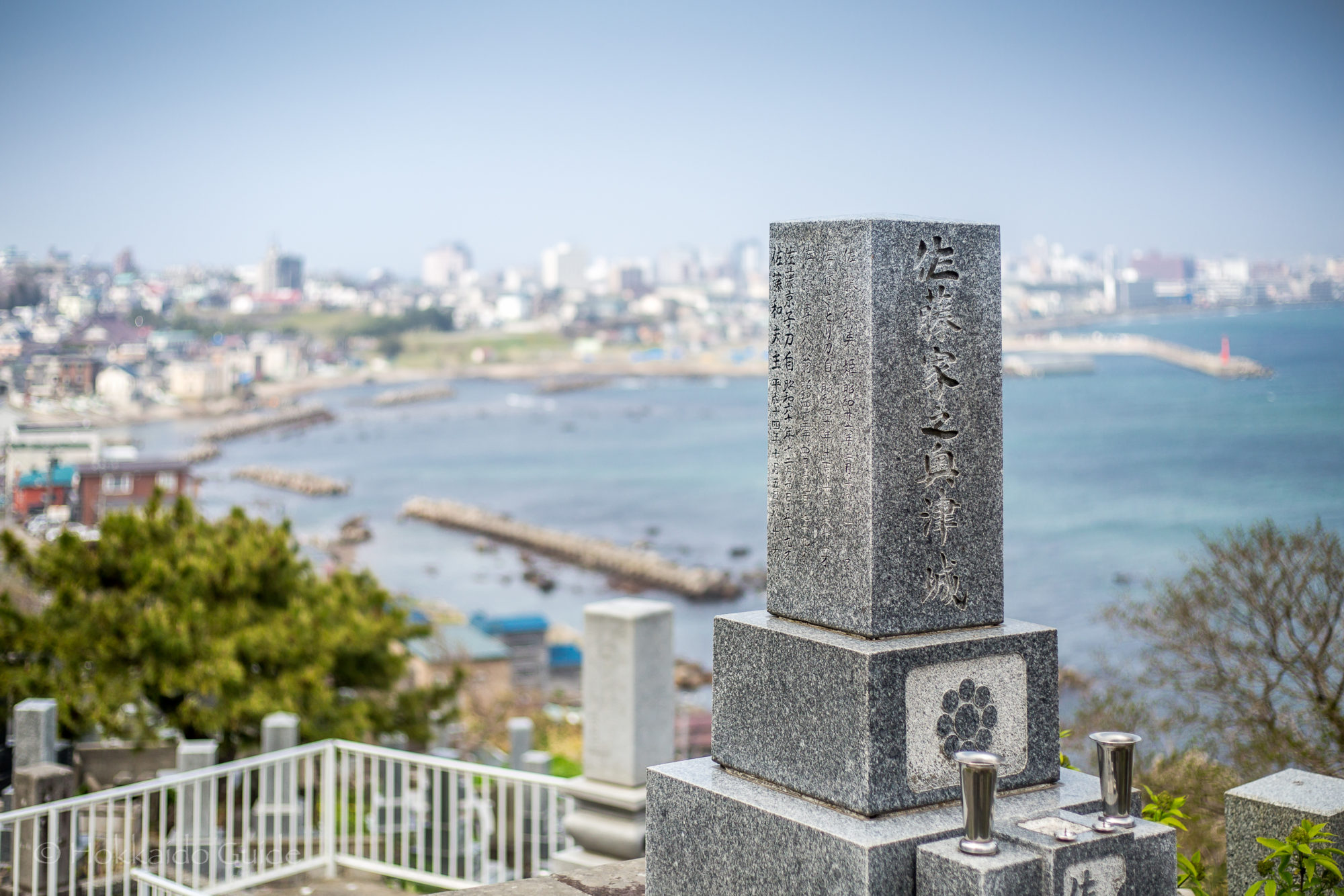
| Admission | Free |
| Opening Hours | - |
| Contact | 013-821-3453 |
| Notes | Cemetery, historical site, no parking |
| Location / Getting There | Located in the southern part of Hakodate city on the headland near Mt. Hakodate. There is street parking around if you are driving. For public transport, the closest station is Yachigashira tram station (seven stops from Hakodate tram station). From here it is a 9 minute walk south. 16-1 Sumiyoshicho, Hakodate, Hokkaido 040-0045 |
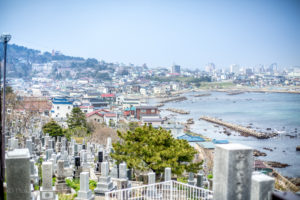 The cemetery of Hakodate Shiei Sumiyoshimachi Kyodo can be found on the headland in Hakodate. It is a very captivating place as it has views overlooking southern Hakodate and being on the edge of the bluff, it has great views overlooking the ocean. The ocean breeze and the peacefulness of this quiet place is home to a couple of sightseeing spots within the cemetery. These include the graves of Ishikawa Takuboku and his family, and monuments to Miyazaki Iku & Sunayama Kage Ji. These spots have plaques about the lives of these famous people.
The cemetery of Hakodate Shiei Sumiyoshimachi Kyodo can be found on the headland in Hakodate. It is a very captivating place as it has views overlooking southern Hakodate and being on the edge of the bluff, it has great views overlooking the ocean. The ocean breeze and the peacefulness of this quiet place is home to a couple of sightseeing spots within the cemetery. These include the graves of Ishikawa Takuboku and his family, and monuments to Miyazaki Iku & Sunayama Kage Ji. These spots have plaques about the lives of these famous people.
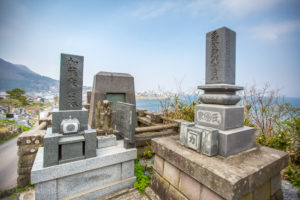 The graves here of note are to do with prominent literary figures of the Meiji era. Ishikawa Takuboku was a prominent poet. Although he only spent a short time Hakodate, he is buried here. During his short stay in Hakodate, he enjoyed the support from a literary group called ‘Bokushukusha’ and was quoted as saying “I’d like to die here.” After succumbing to tuberculosis his brother constructed this grave in 1926. Miyazaki Iku was a poet and member of the Bokushukusha and supporter of Ishikawa Takuboku. The other monument is for Sunayama Kage Ji (real name Nakano Tarao). He was actively engaged in the literary magazine “Gin No Tsubo” which translates to “The Silver Pot”.
The graves here of note are to do with prominent literary figures of the Meiji era. Ishikawa Takuboku was a prominent poet. Although he only spent a short time Hakodate, he is buried here. During his short stay in Hakodate, he enjoyed the support from a literary group called ‘Bokushukusha’ and was quoted as saying “I’d like to die here.” After succumbing to tuberculosis his brother constructed this grave in 1926. Miyazaki Iku was a poet and member of the Bokushukusha and supporter of Ishikawa Takuboku. The other monument is for Sunayama Kage Ji (real name Nakano Tarao). He was actively engaged in the literary magazine “Gin No Tsubo” which translates to “The Silver Pot”.
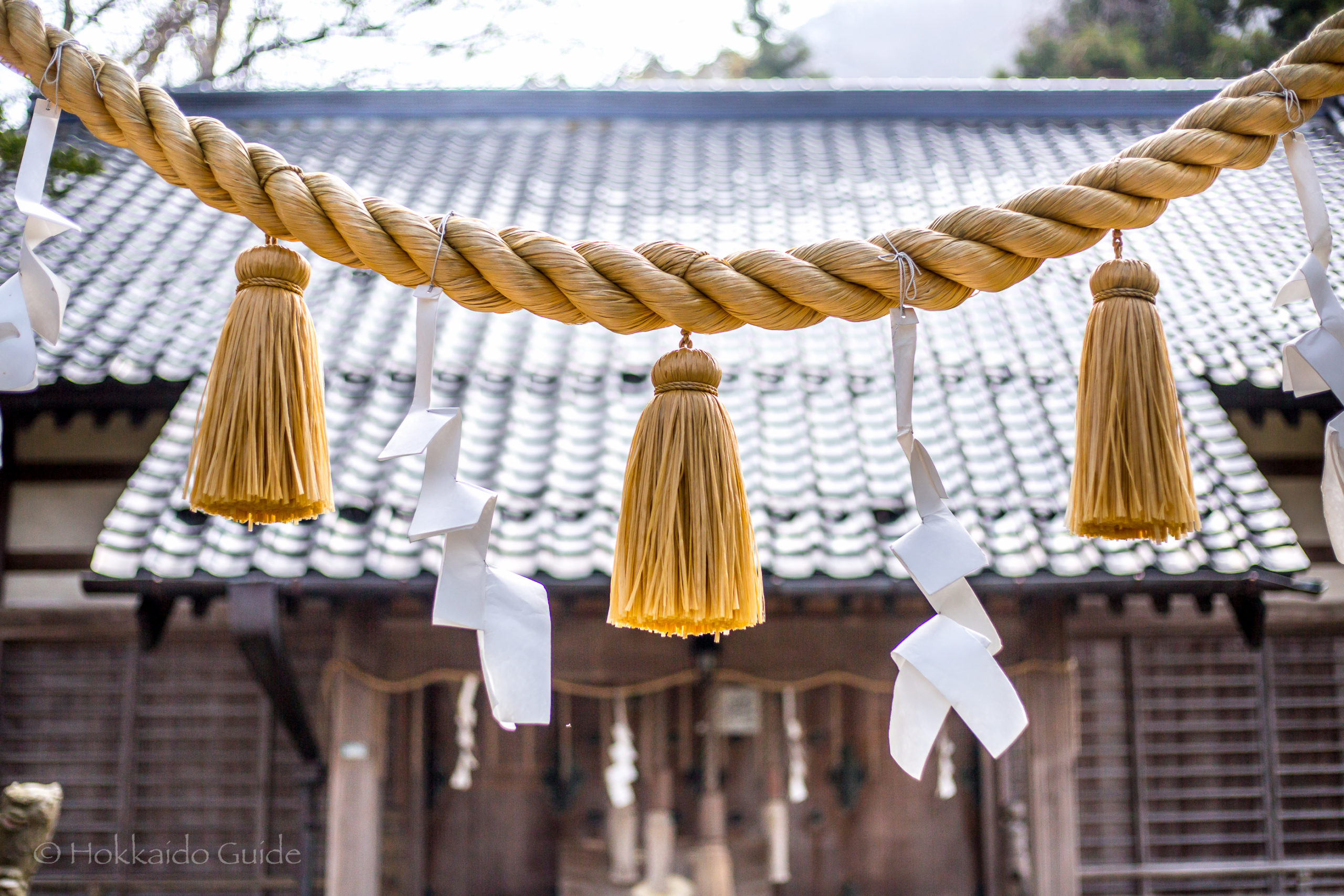
Sumiyoshi Shrine
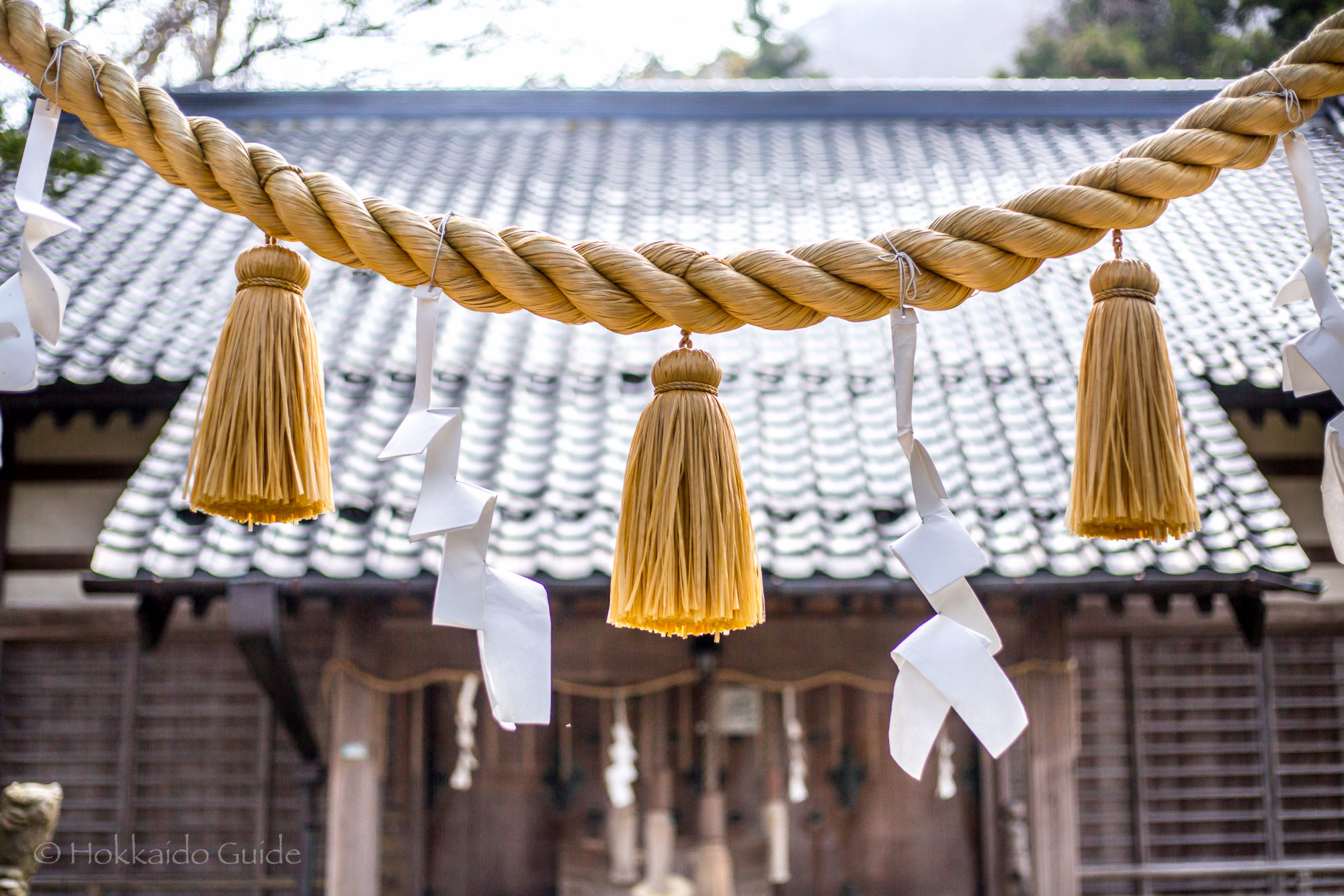
| Admission | Free |
| Opening Hours | - |
| Contact | 011-3822-2608 |
| Notes | Shinto shrine, no parking, cherry blossom area |
| Location / Getting There | Located in the southern part of Hakodate city near the base of Mt. Hakodate. There is street parking around if you are driving. For public transport, the closest station is Yachigashira tram station (seven stops from Hakodate tram station). From here it is a 9 minute walk south. 1-7 Sumiyoshicho, Hakodate, Hokkaido 040-0045 |
 Sumiyoshi Shrine is a shinto shrine in Hakodate. It is located on the cape near the base of Mt. Hakodate. It is not a far walk from the ocean, on the eastern side of the headland. The founding date of the shrine is unknown, however according to local stories passed down, the shrine was built during the Kamakura period, which was established in 1192 (bringing the start of the samurai). The shrine (known then as Miyoshi Shrine), was rebuilt 600 years later during the An’ei era. The shrine was then rebuilt again in its current location, after it was burnt down in a great fire in 1937. The shrine was renamed Sumiyoshi Shrine.
Sumiyoshi Shrine is a shinto shrine in Hakodate. It is located on the cape near the base of Mt. Hakodate. It is not a far walk from the ocean, on the eastern side of the headland. The founding date of the shrine is unknown, however according to local stories passed down, the shrine was built during the Kamakura period, which was established in 1192 (bringing the start of the samurai). The shrine (known then as Miyoshi Shrine), was rebuilt 600 years later during the An’ei era. The shrine was then rebuilt again in its current location, after it was burnt down in a great fire in 1937. The shrine was renamed Sumiyoshi Shrine.
 The shrine is best to visit during the cherry blossom season from mid April to early May. The road leading up to the shrine is flanked by dozens of beautiful cherry blossom trees. Unlike other cherry blossom areas, this road is not crowded. Once up the top of the hill, the grounds of Sumiyoshi Shrine are a nice place to wander around and enjoy the tranquility. This area also makes for a good place to get some photos. The shrine serves as a place of worship for 350 households and sees special events held throughout the year.
The shrine is best to visit during the cherry blossom season from mid April to early May. The road leading up to the shrine is flanked by dozens of beautiful cherry blossom trees. Unlike other cherry blossom areas, this road is not crowded. Once up the top of the hill, the grounds of Sumiyoshi Shrine are a nice place to wander around and enjoy the tranquility. This area also makes for a good place to get some photos. The shrine serves as a place of worship for 350 households and sees special events held throughout the year.
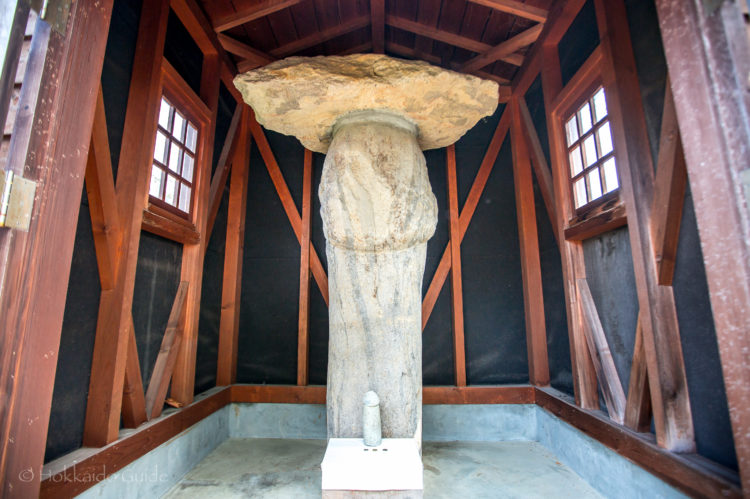
Ochinpo Shrine
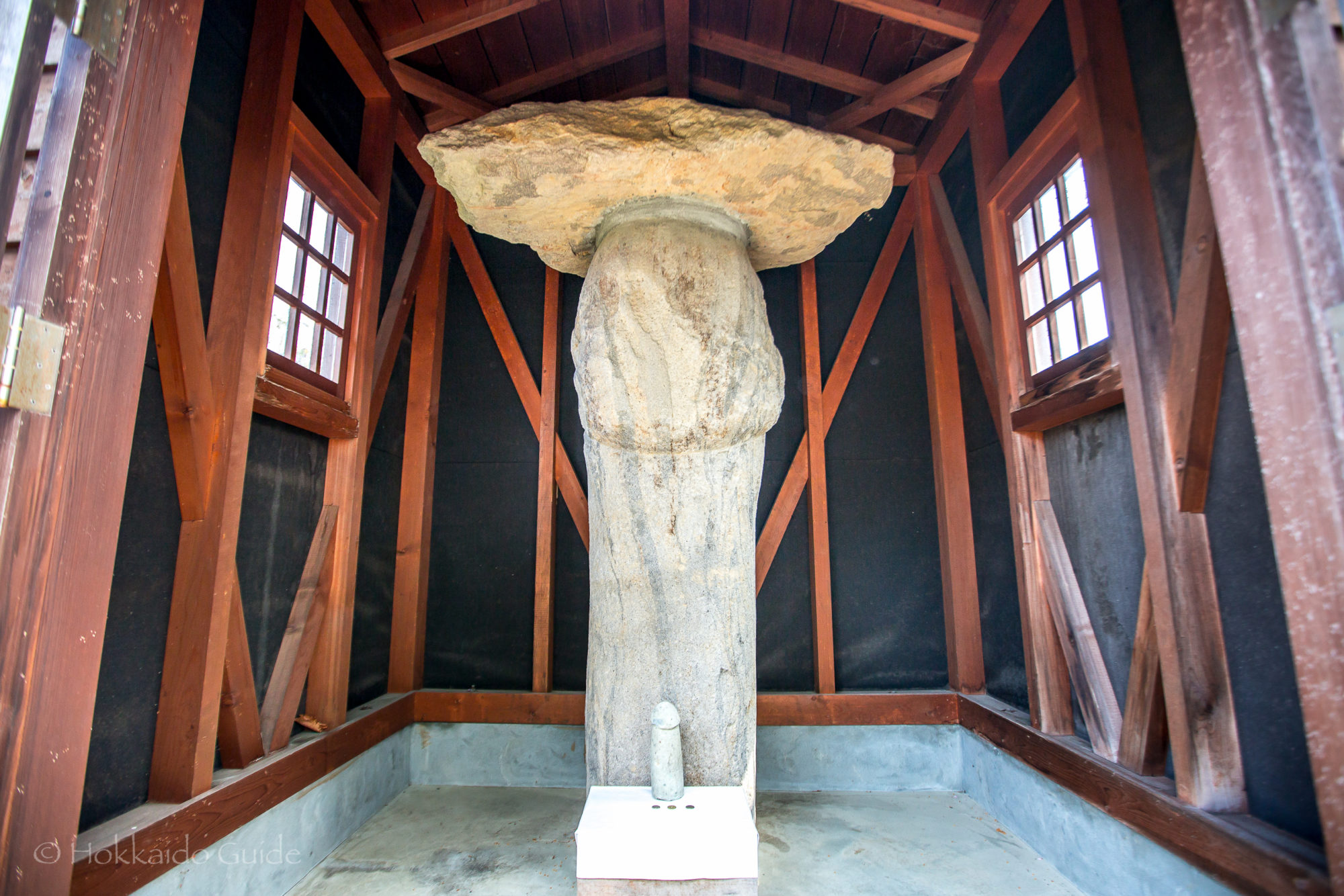
| Admission | Free |
| Opening Hours | - |
| Contact | - |
| Notes | Unique shrine, parking, part of Yachigashira Onsen |
| Location / Getting There | Located in the southern part of Hakodate city near the base of Mt. Hakodate. It is part Yachigashira Onsen. For public transport, the closest station is Yachigashira tram station (seven stops from Hakodate tram station). From here it is a 4 minute walk south towards Mt. Hakodate. 20-20 Yachigashiracho, Hakodate, Hokkaido 040-0046 |
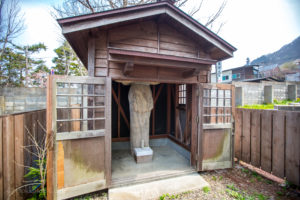 This may not be high on the must see things in Hakodate but it is certainly up there in terms of uniqueness. This appropriately named shrine can be found near the base of Mt. Hakodate. The Japanese word ‘Chinpo’ translates to ‘penis’ in English. Alternatively, the word Chinpō also translates into ‘rare treasure’. Whichever translation tickles your fancy, Ochinpo Shrine certainly makes for an interesting sightseeing spot. It is a small shrine, although the same can’t be said for the contents that are hidden within.
This may not be high on the must see things in Hakodate but it is certainly up there in terms of uniqueness. This appropriately named shrine can be found near the base of Mt. Hakodate. The Japanese word ‘Chinpo’ translates to ‘penis’ in English. Alternatively, the word Chinpō also translates into ‘rare treasure’. Whichever translation tickles your fancy, Ochinpo Shrine certainly makes for an interesting sightseeing spot. It is a small shrine, although the same can’t be said for the contents that are hidden within.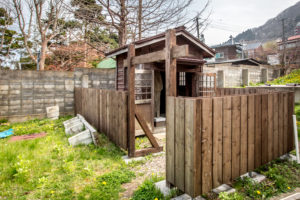 The large phallic stone here is a Dōsojin (a spirit or god) and is said to have energy to bring good luck. This particular Dōsojin brings fortune for childbirth, easy delivery, and child protection. The shrine can be found on the grounds of Yachigashira Onsen to the left of the building. The stone itself was excavated while the grounds were being leveled in 1952, and was placed where it was found. With plenty of parking and a spot to relax at the hot springs here, take a quick stroll and check out the Ochinpo Shrine.
The large phallic stone here is a Dōsojin (a spirit or god) and is said to have energy to bring good luck. This particular Dōsojin brings fortune for childbirth, easy delivery, and child protection. The shrine can be found on the grounds of Yachigashira Onsen to the left of the building. The stone itself was excavated while the grounds were being leveled in 1952, and was placed where it was found. With plenty of parking and a spot to relax at the hot springs here, take a quick stroll and check out the Ochinpo Shrine.

